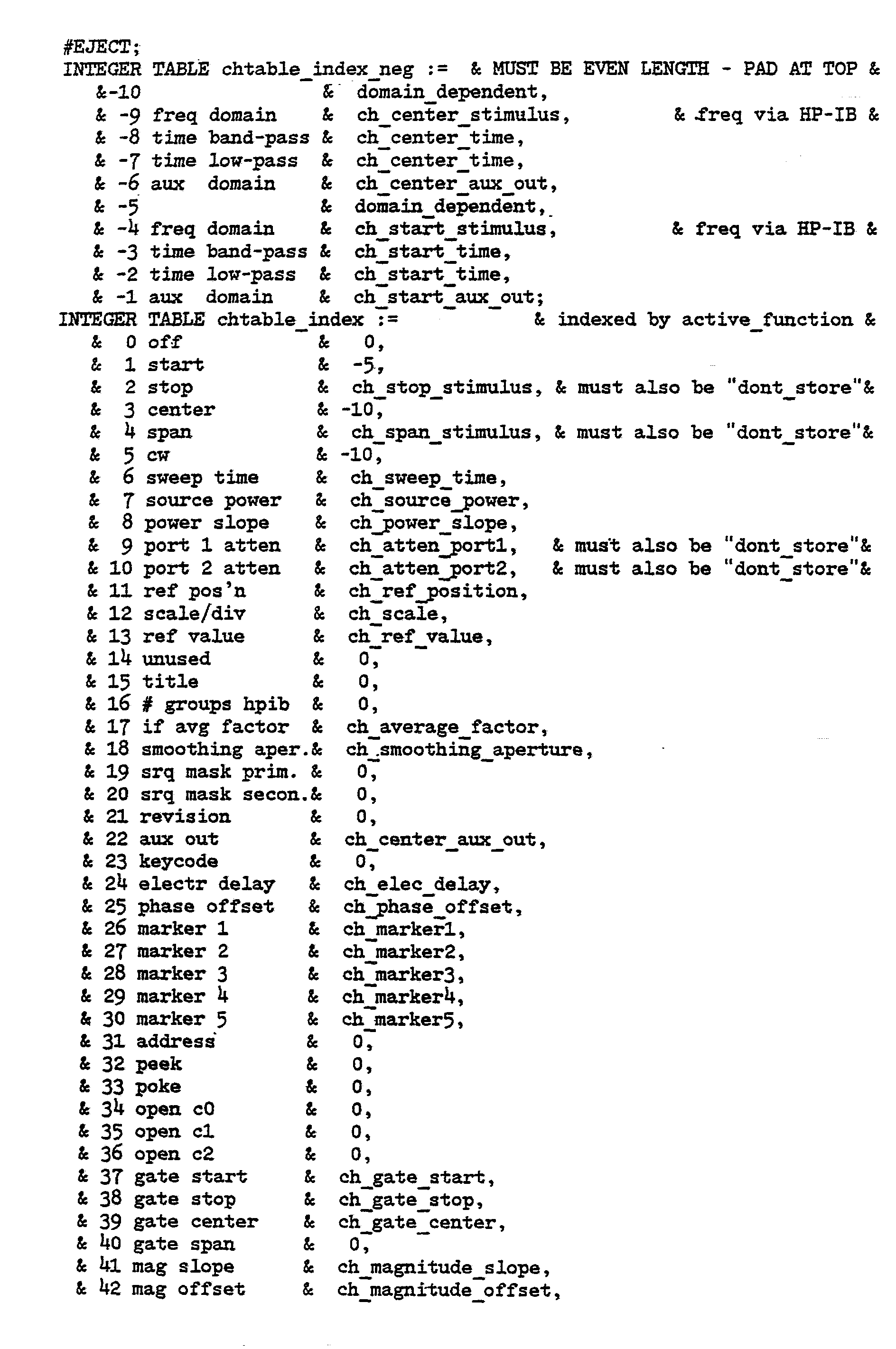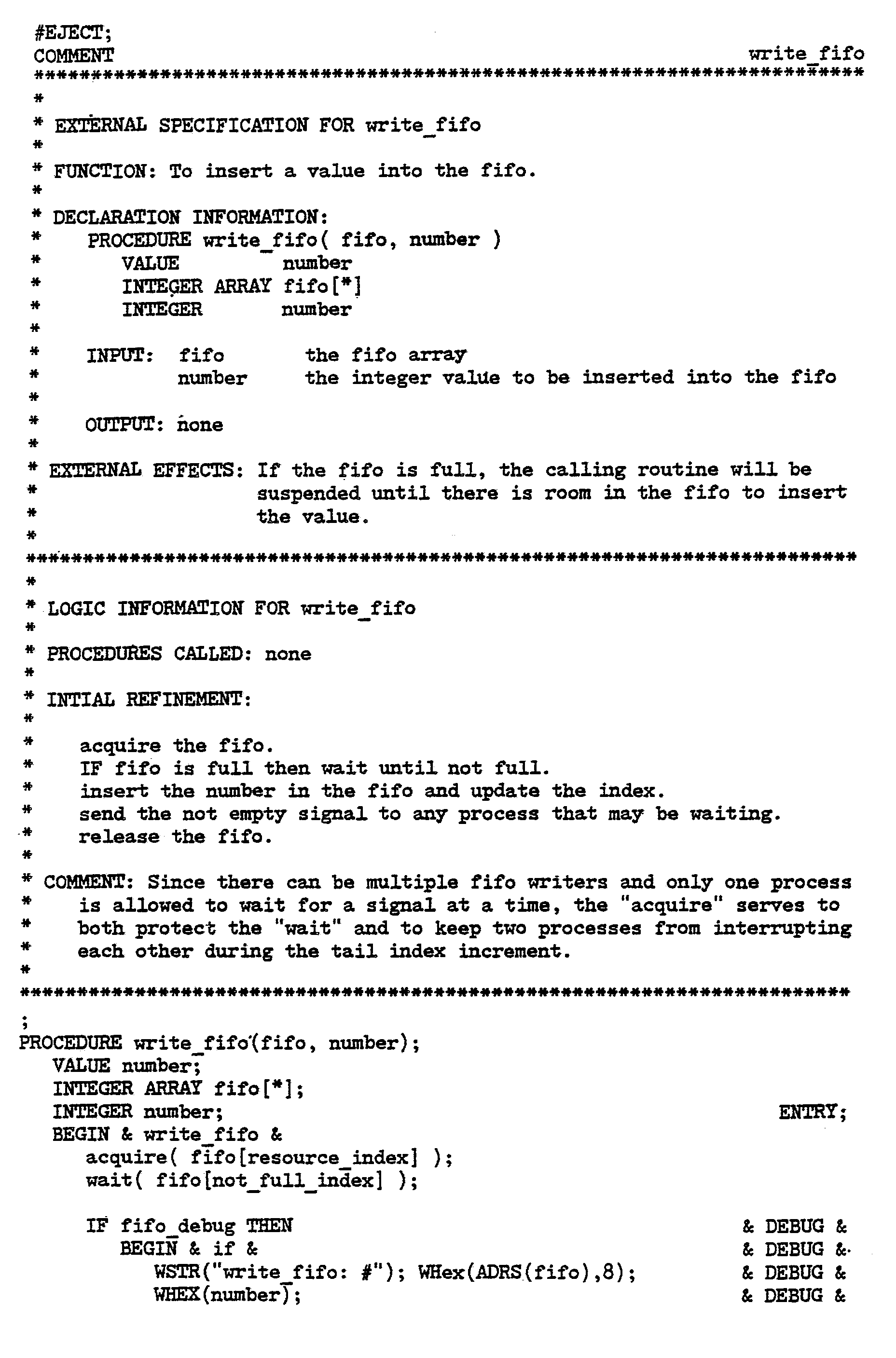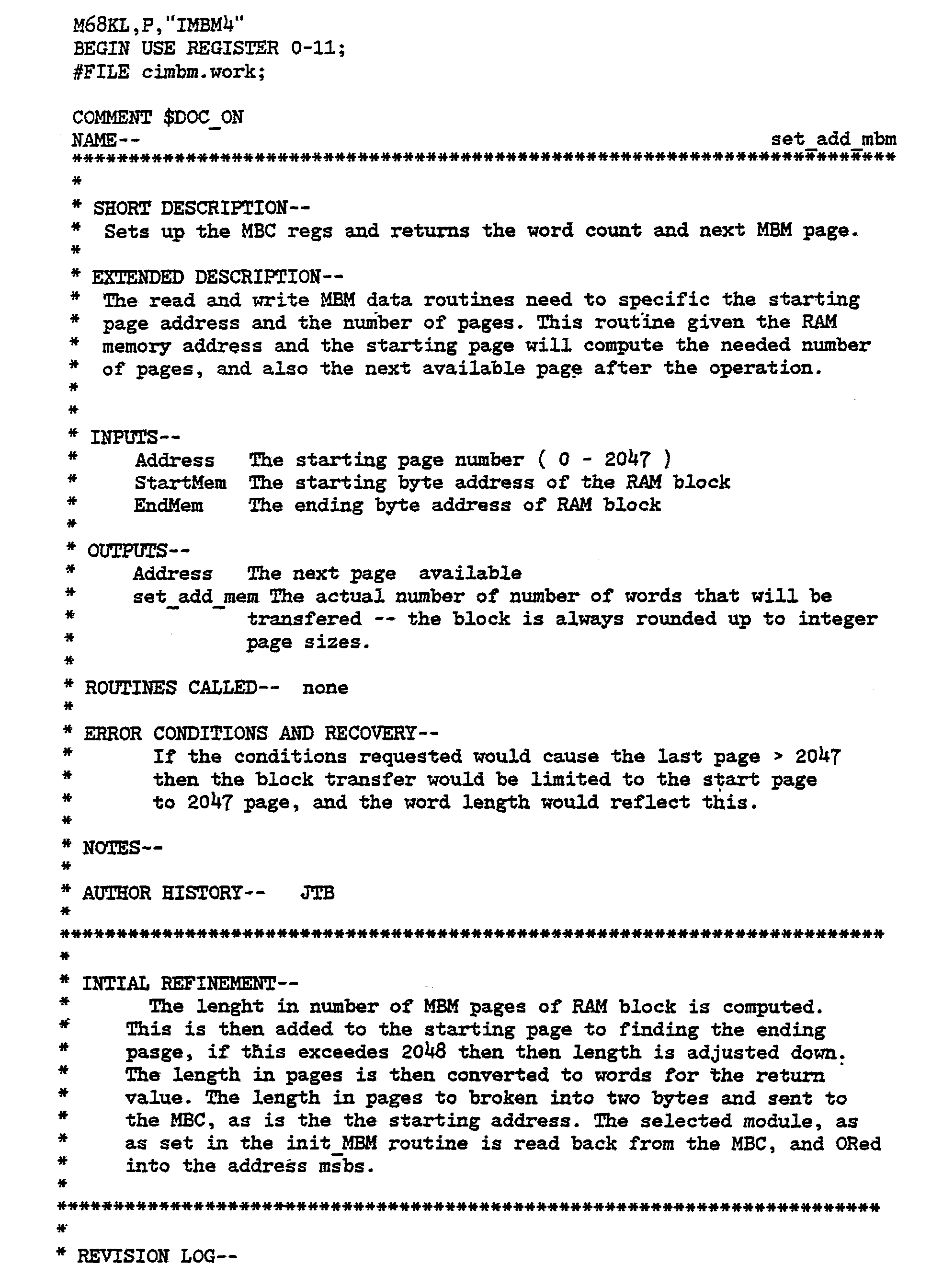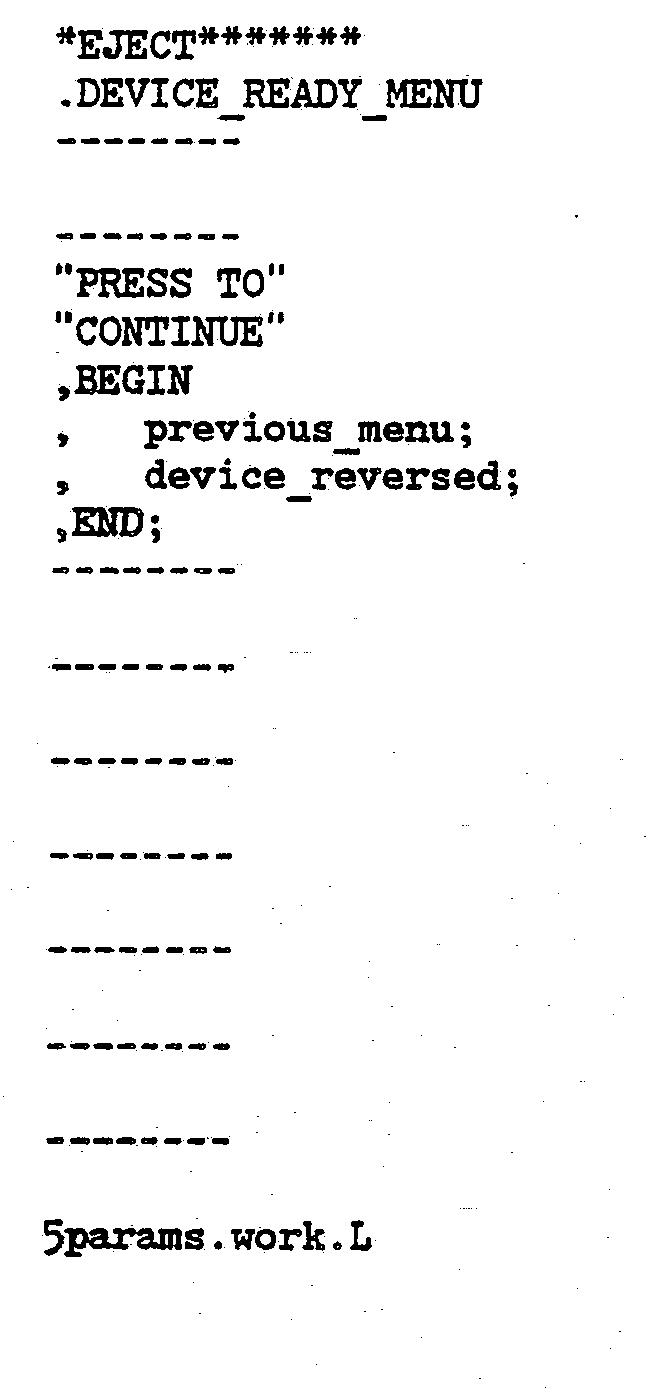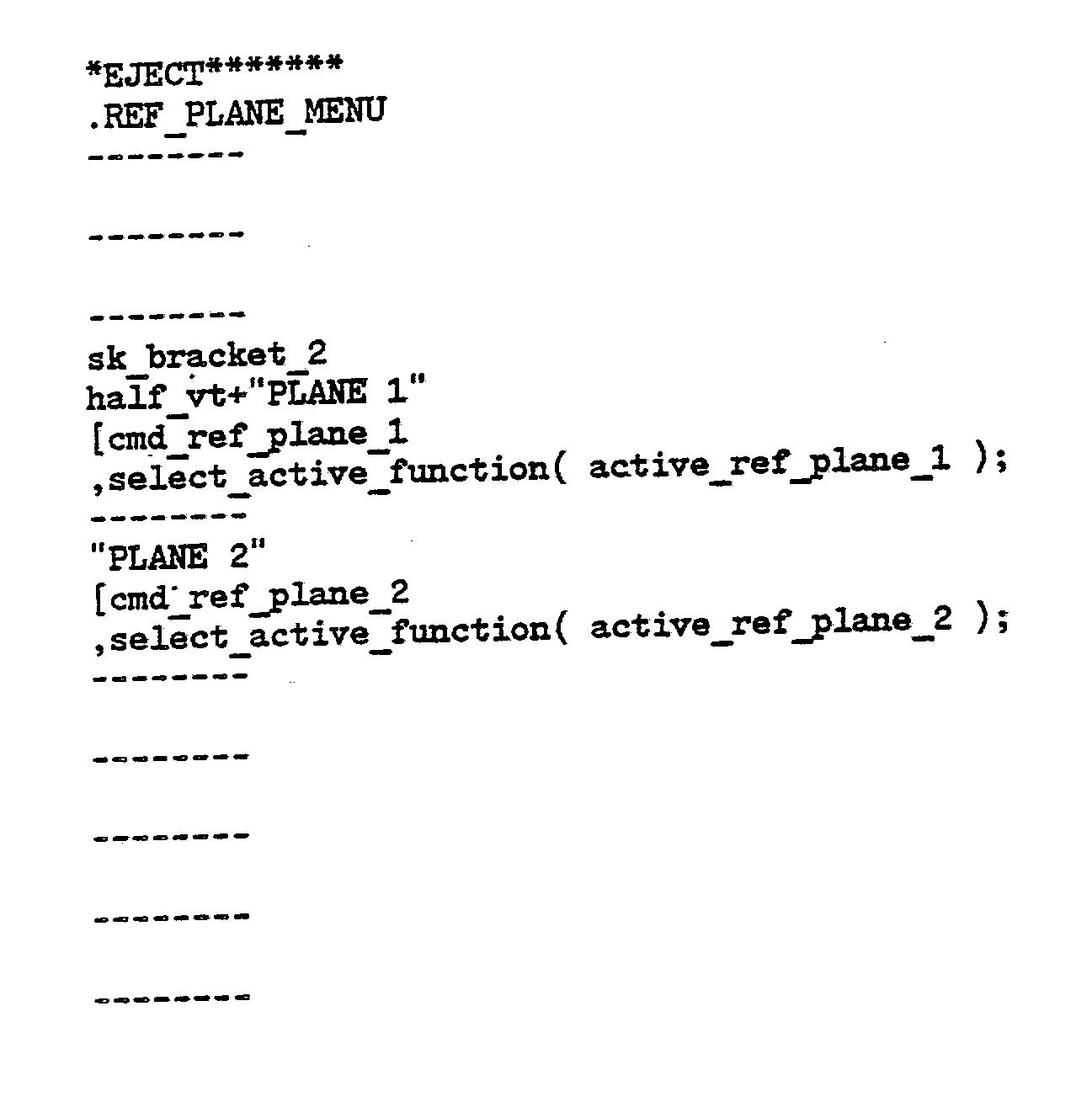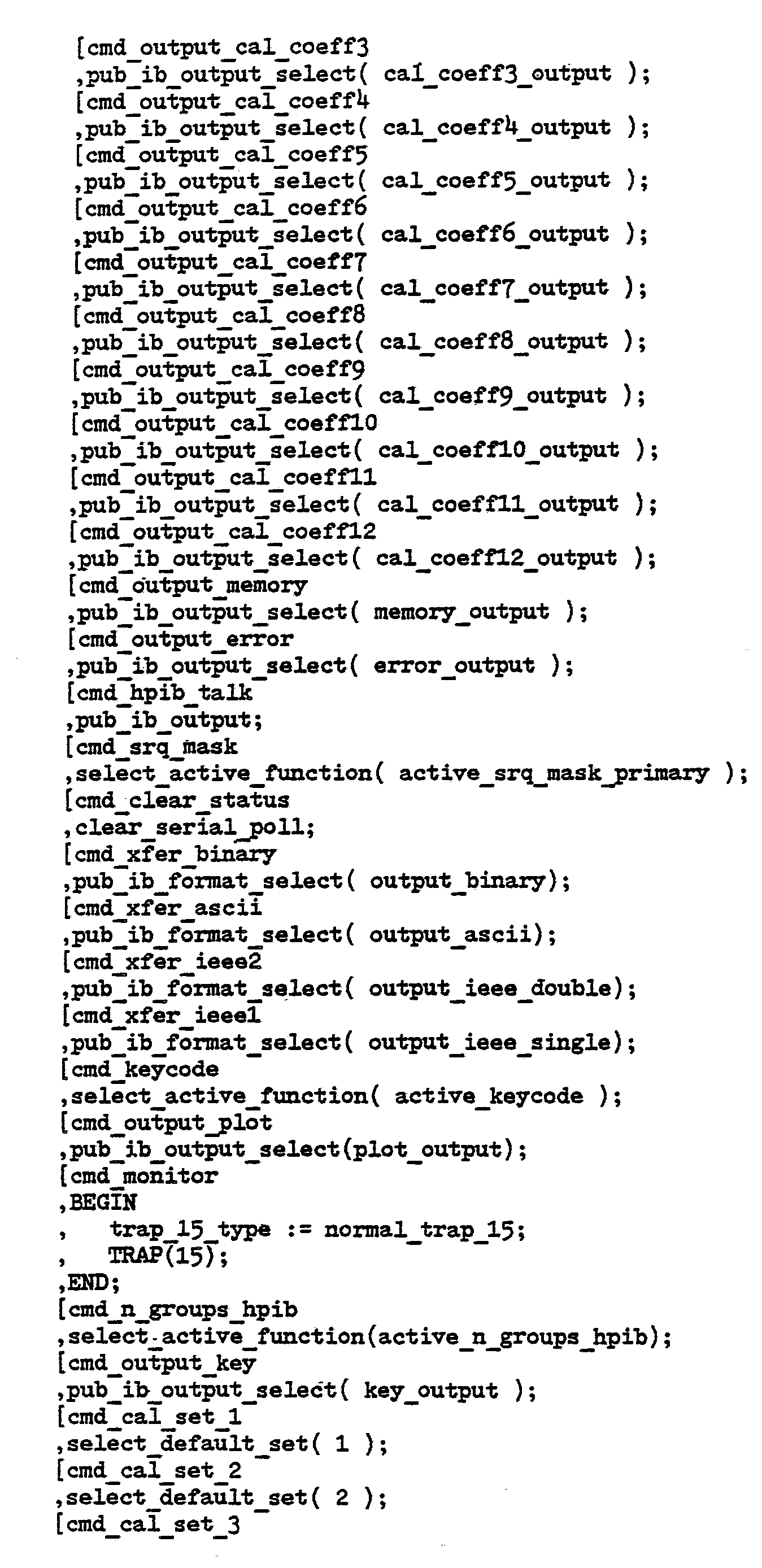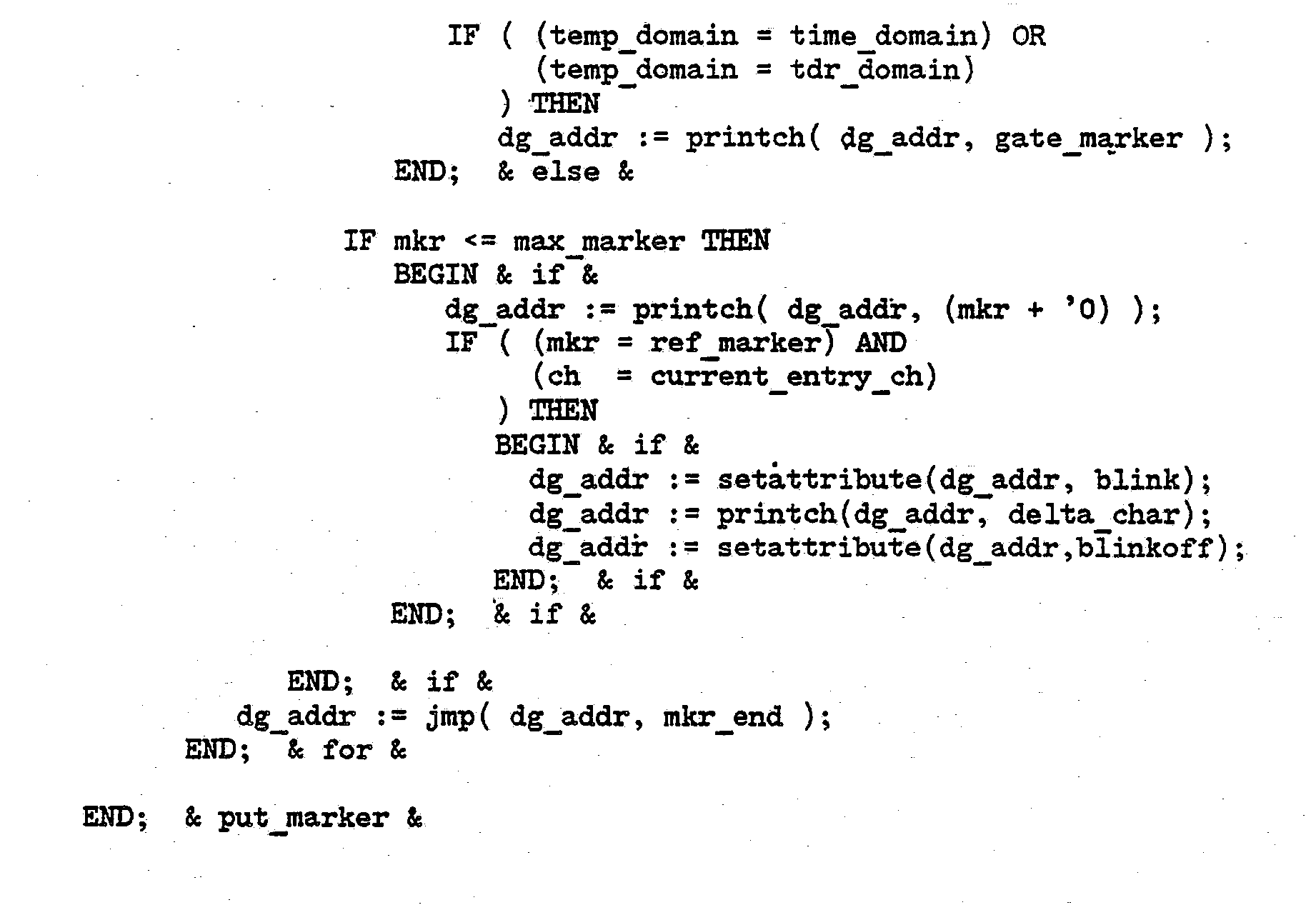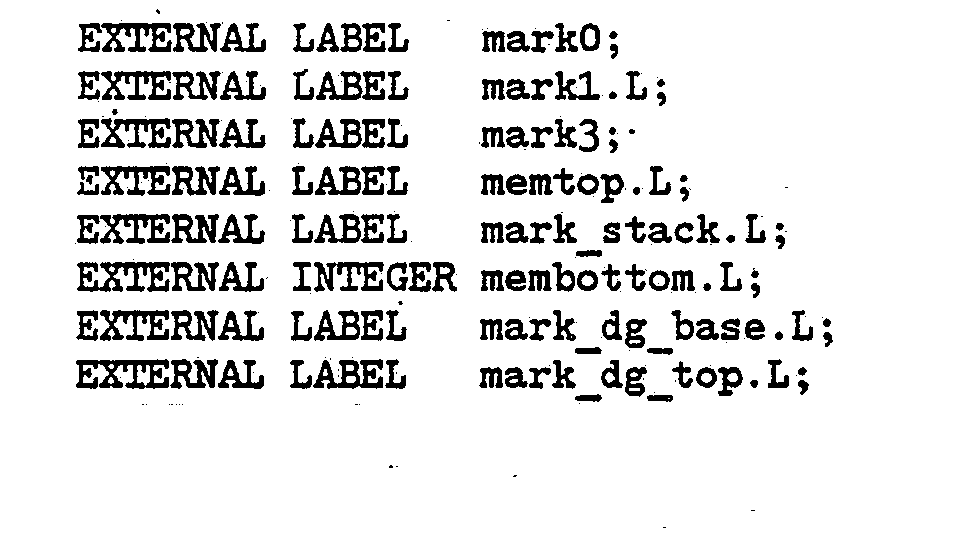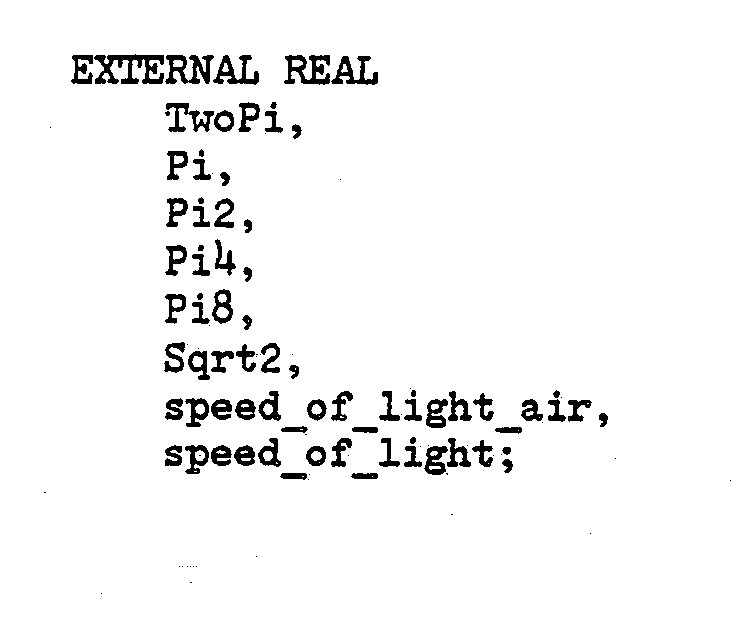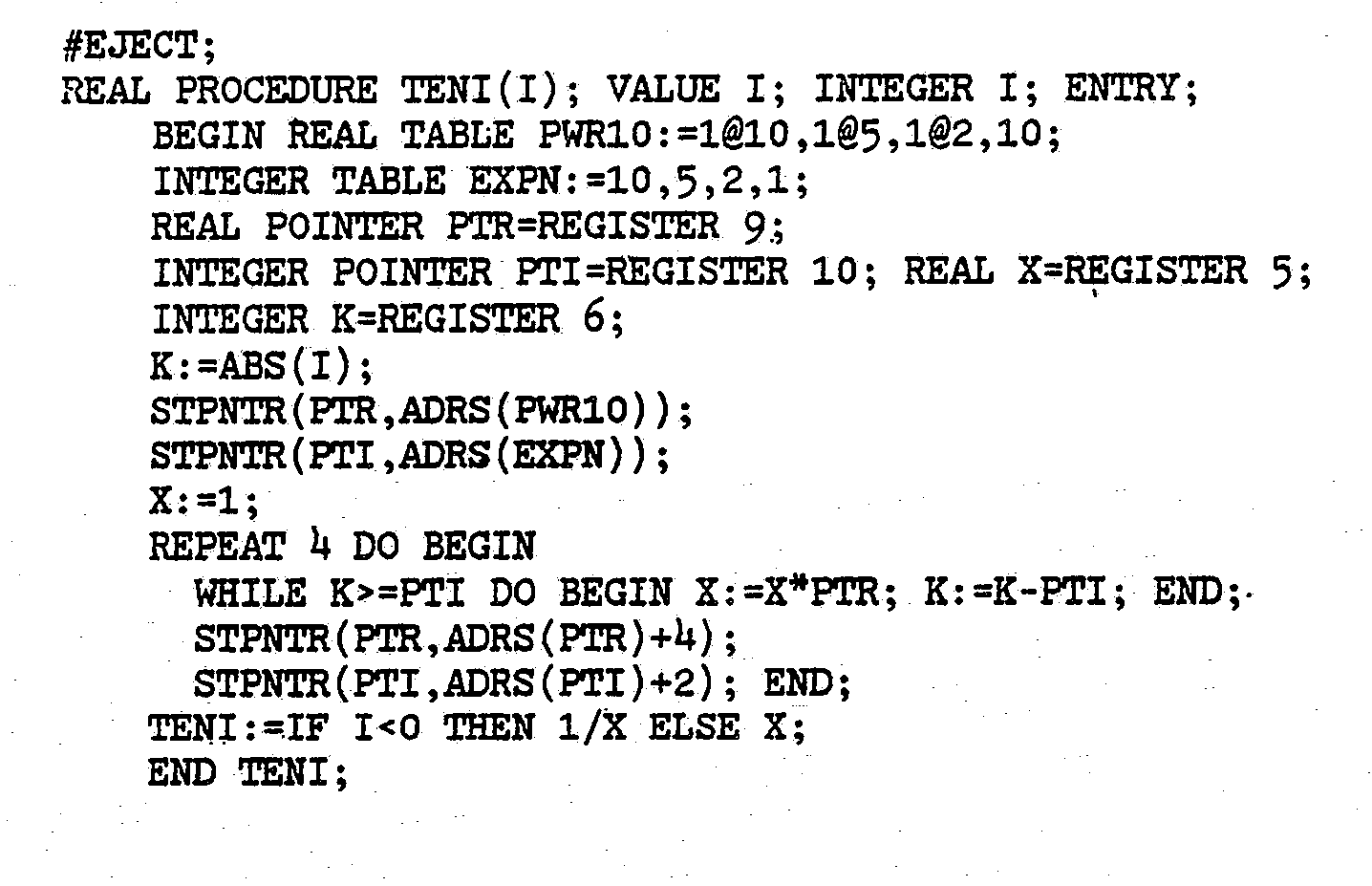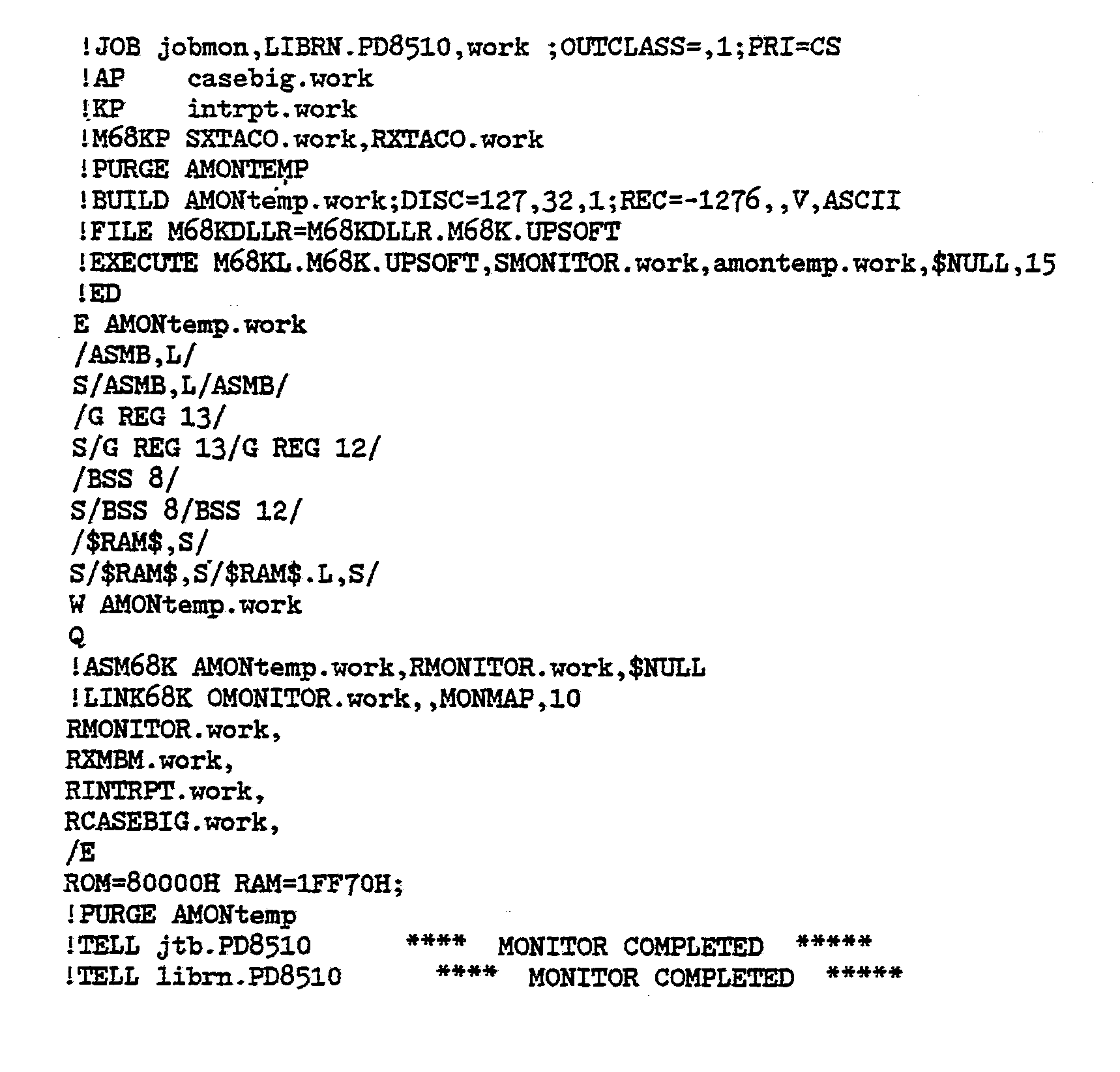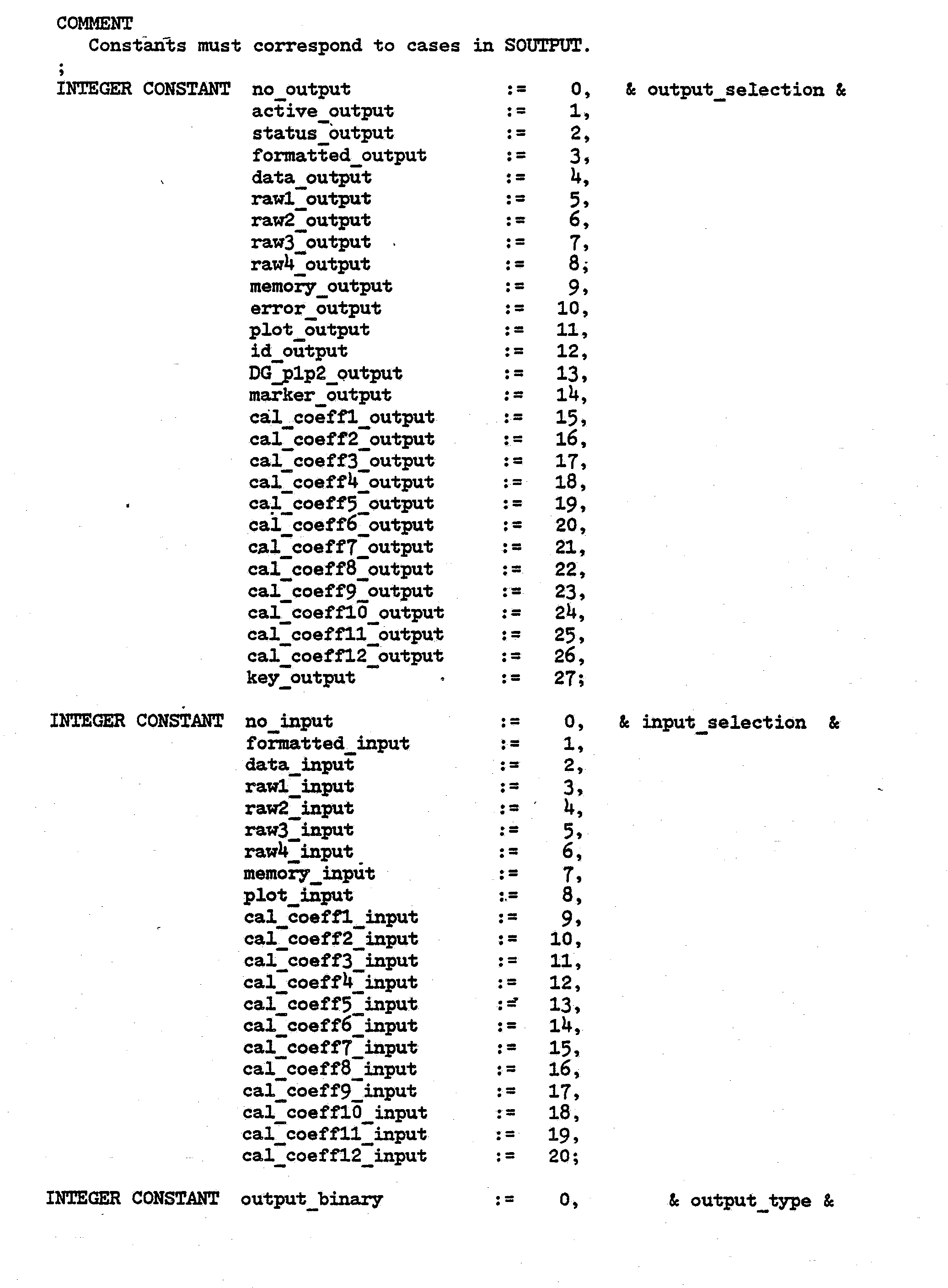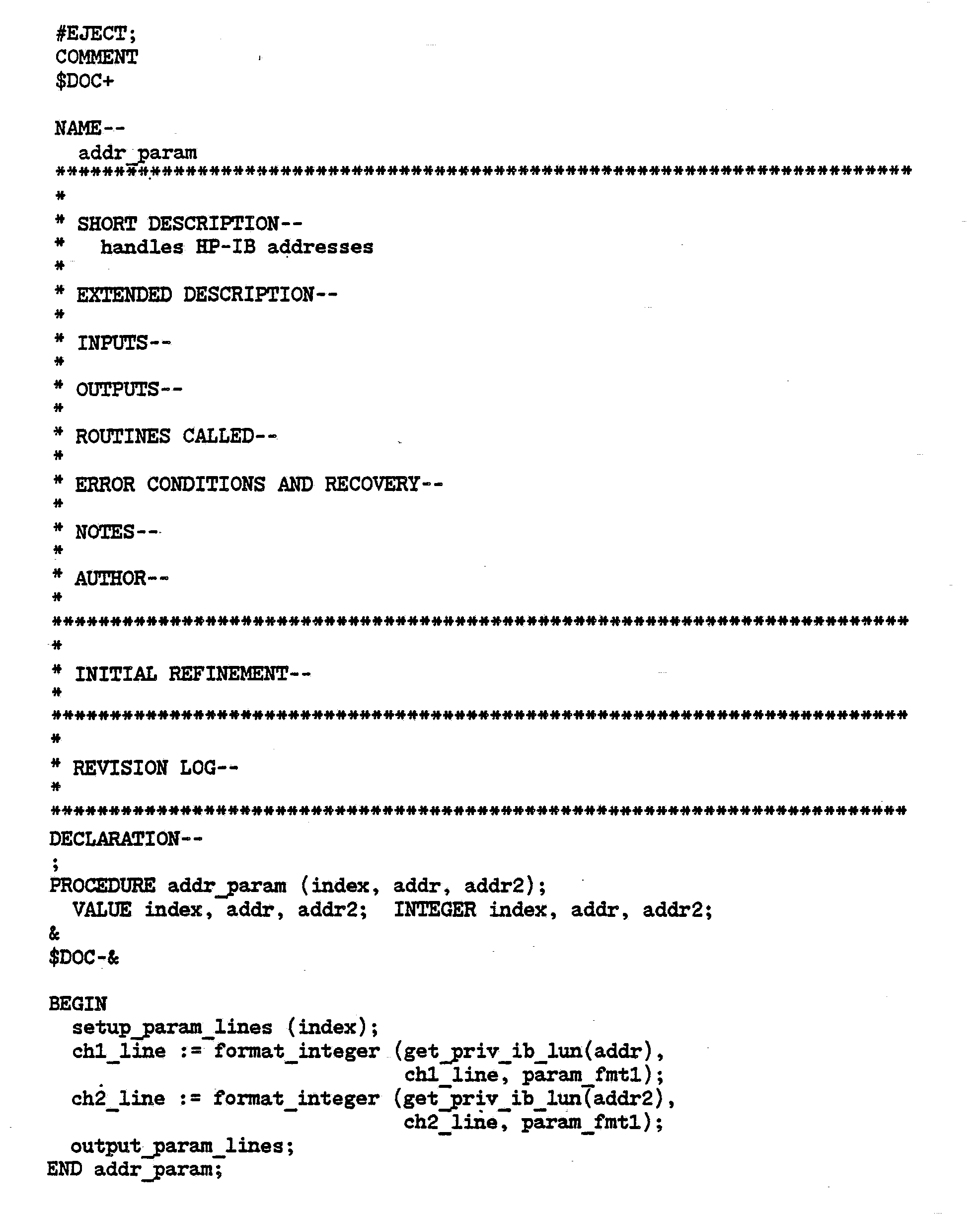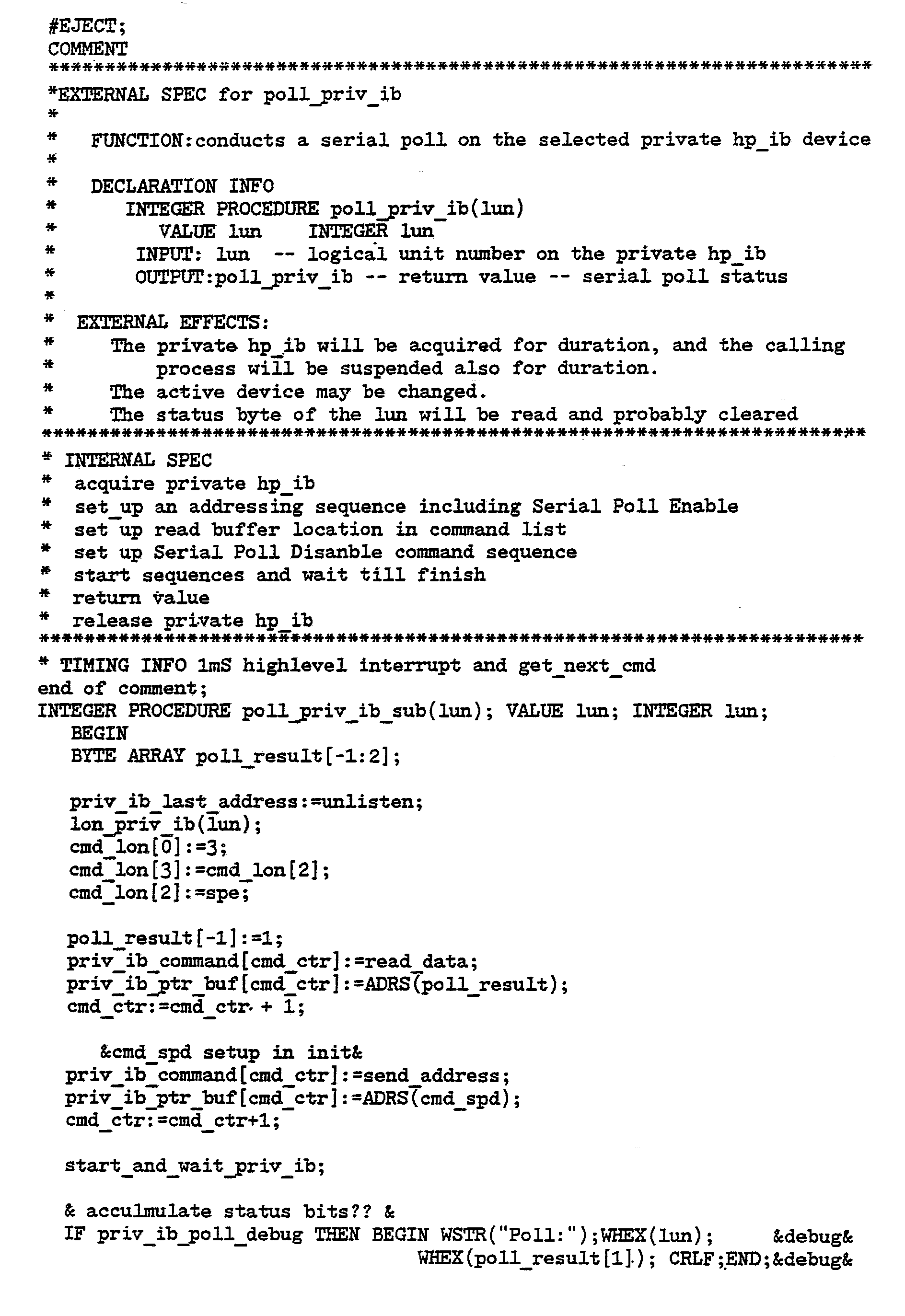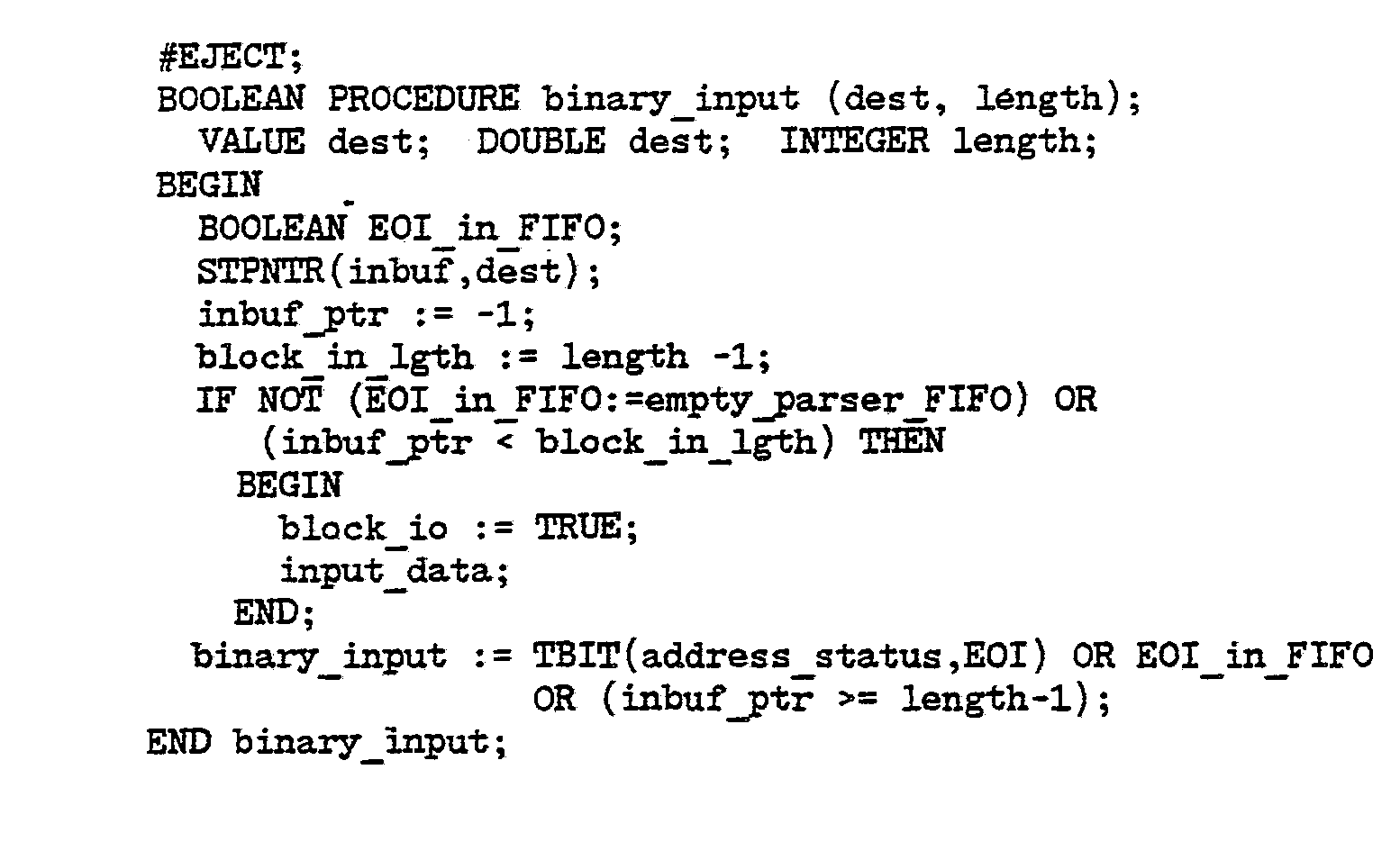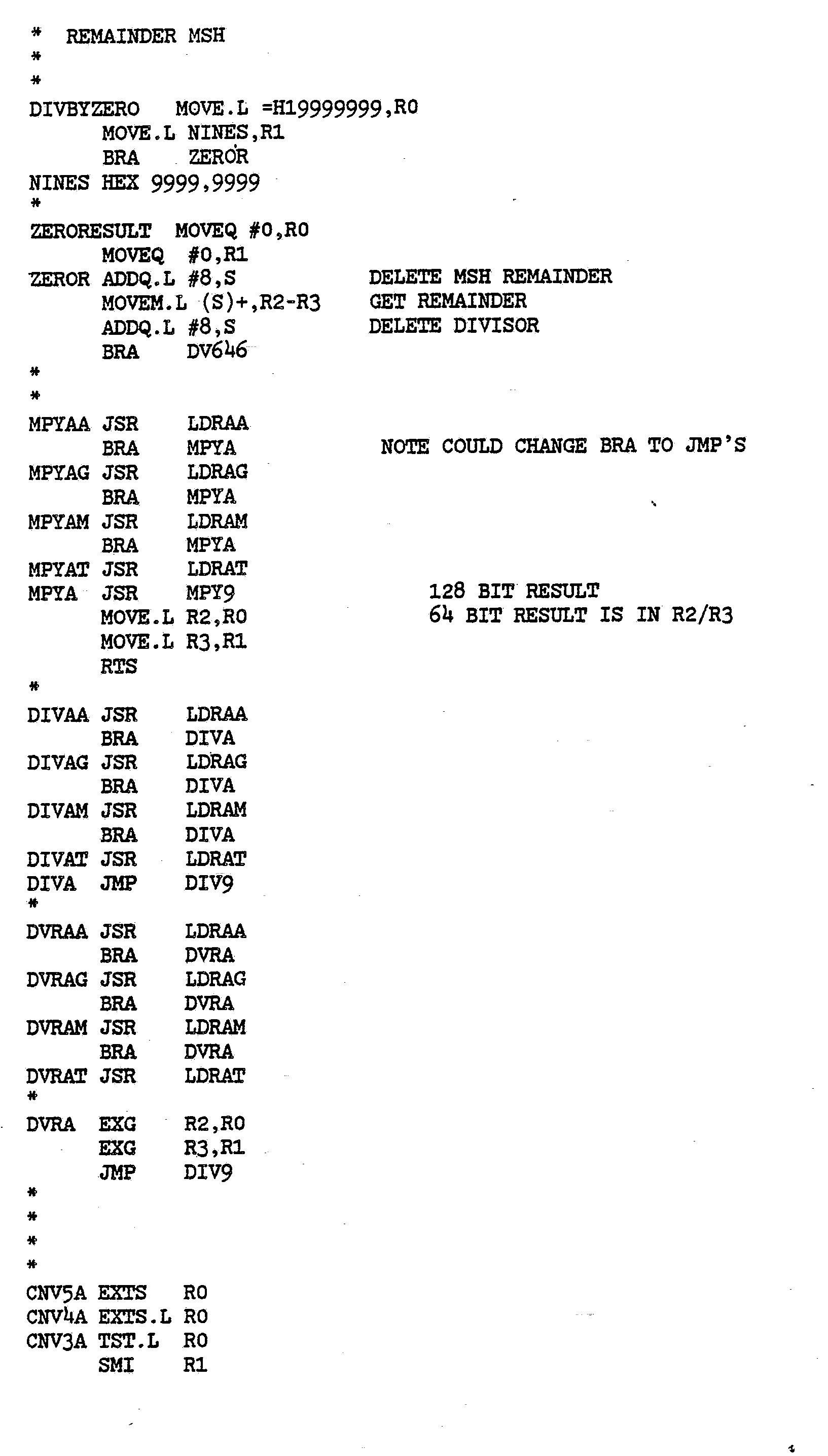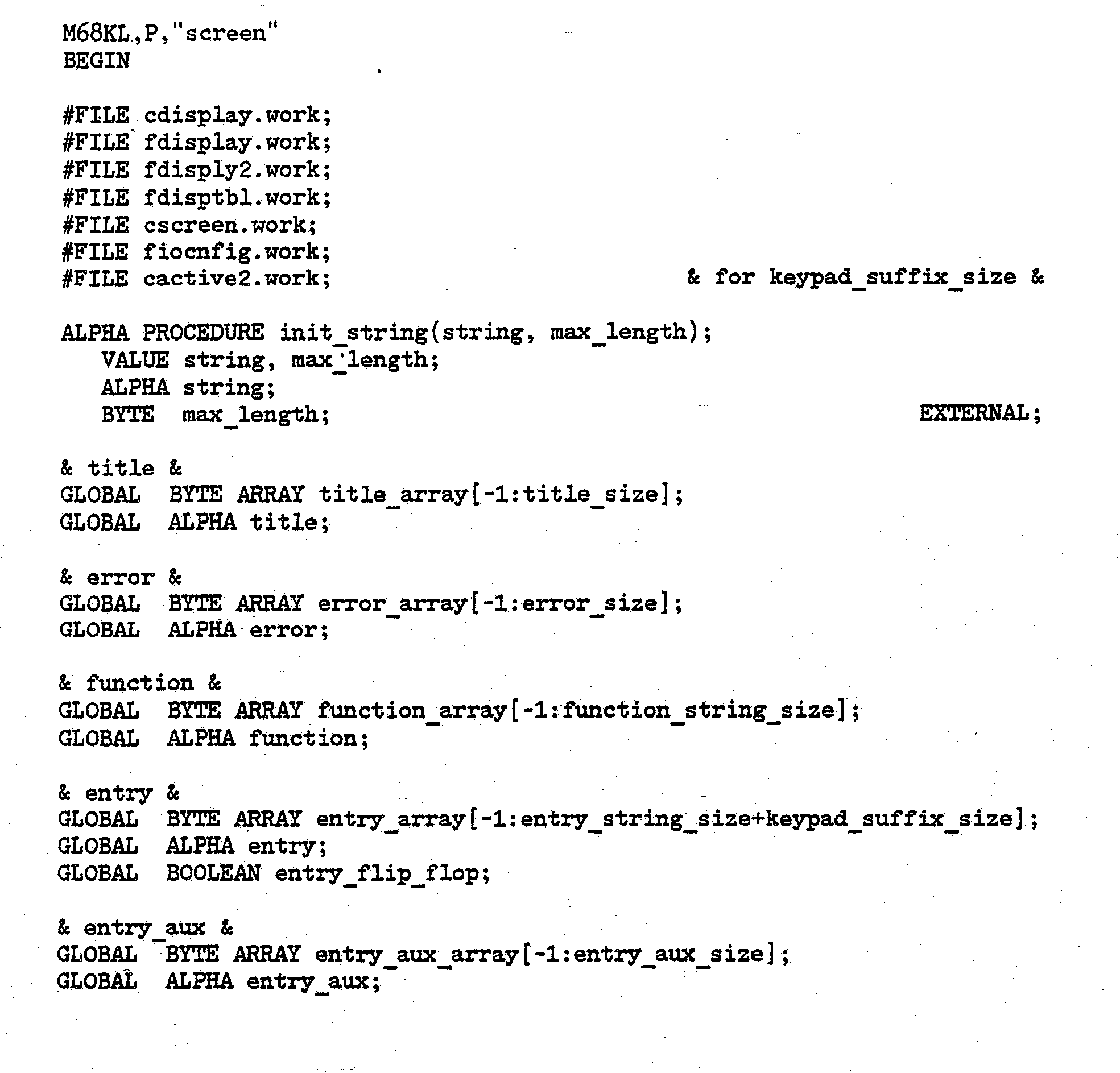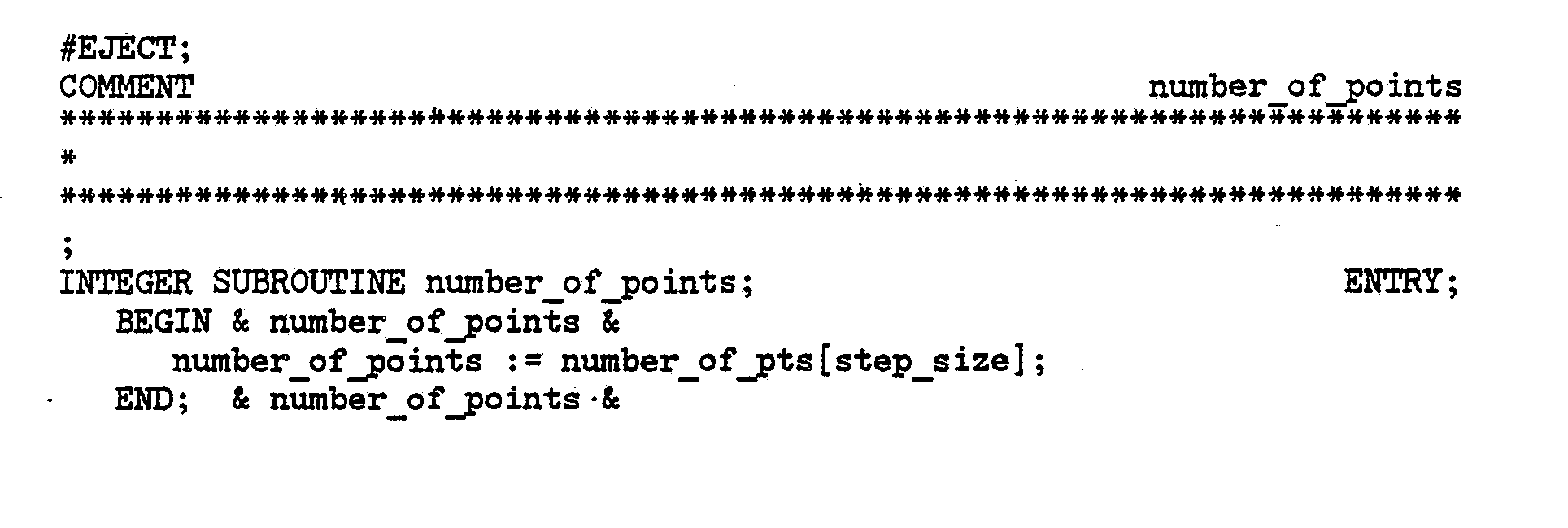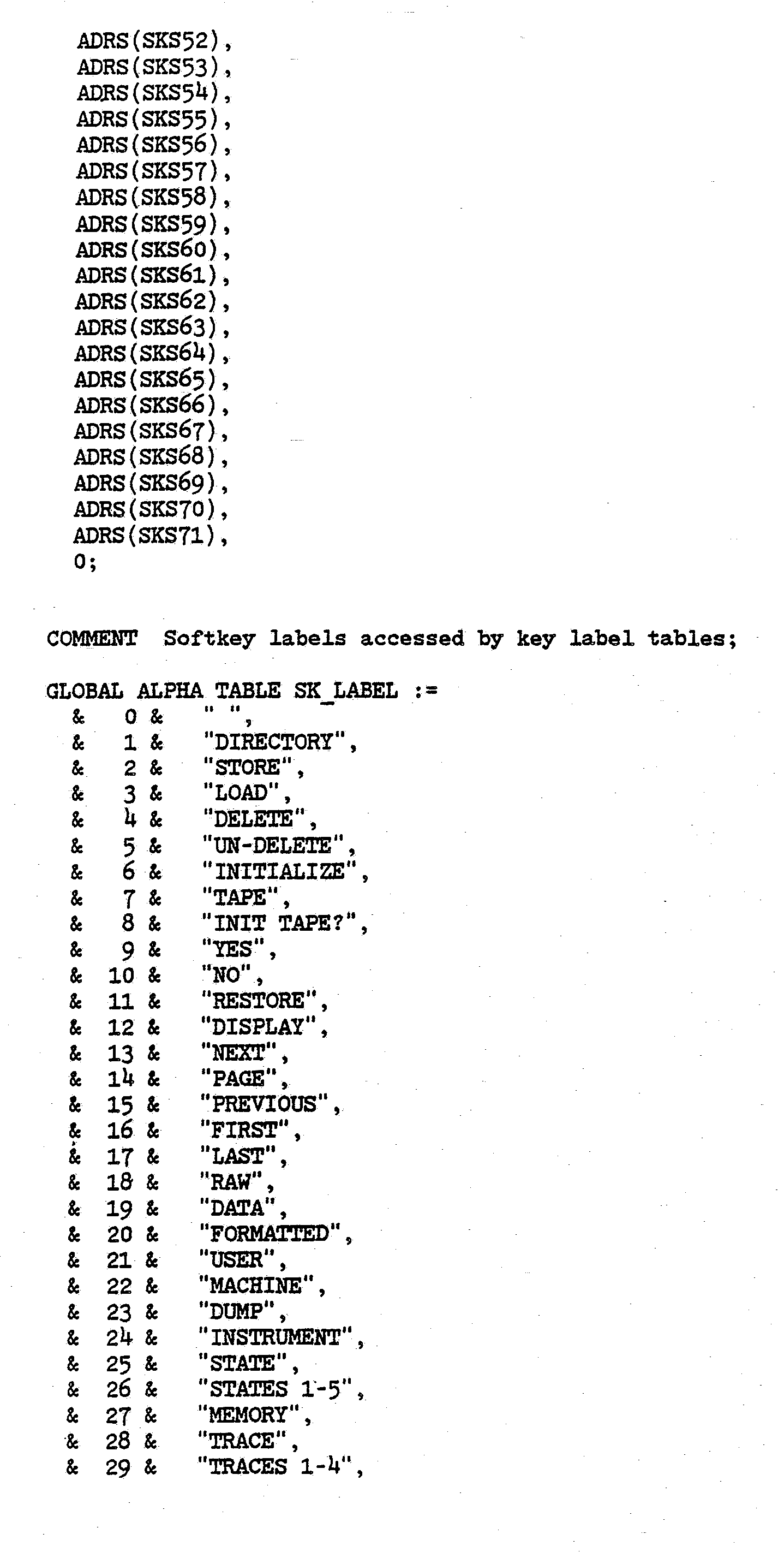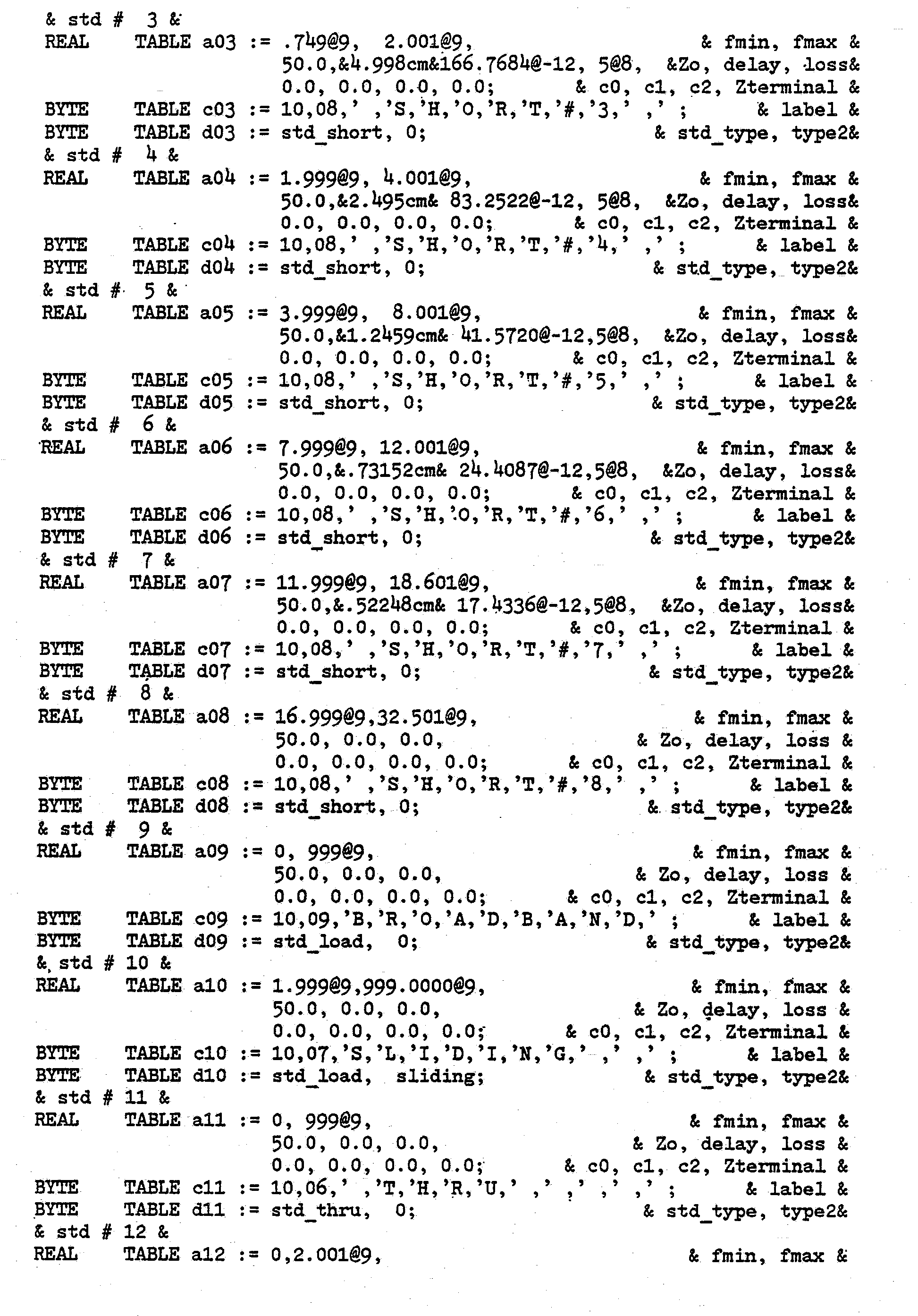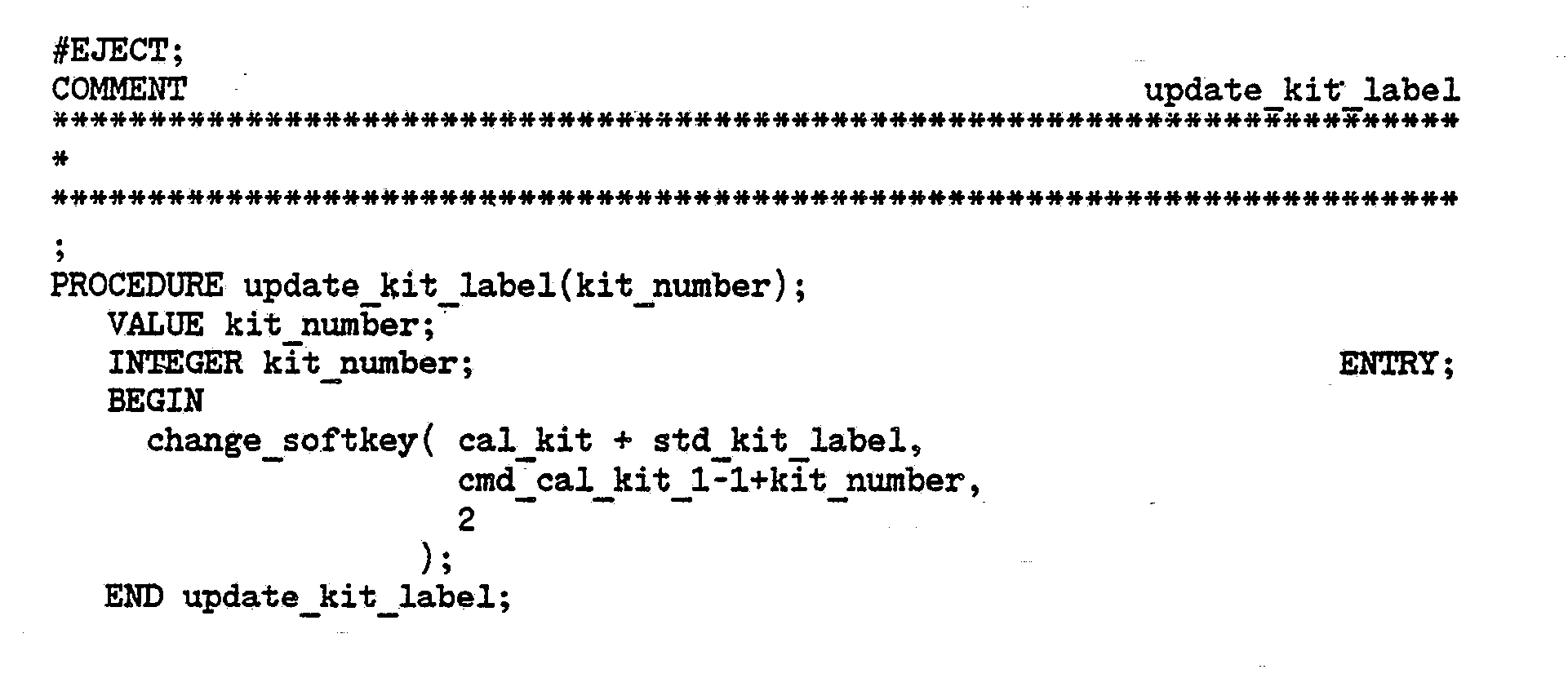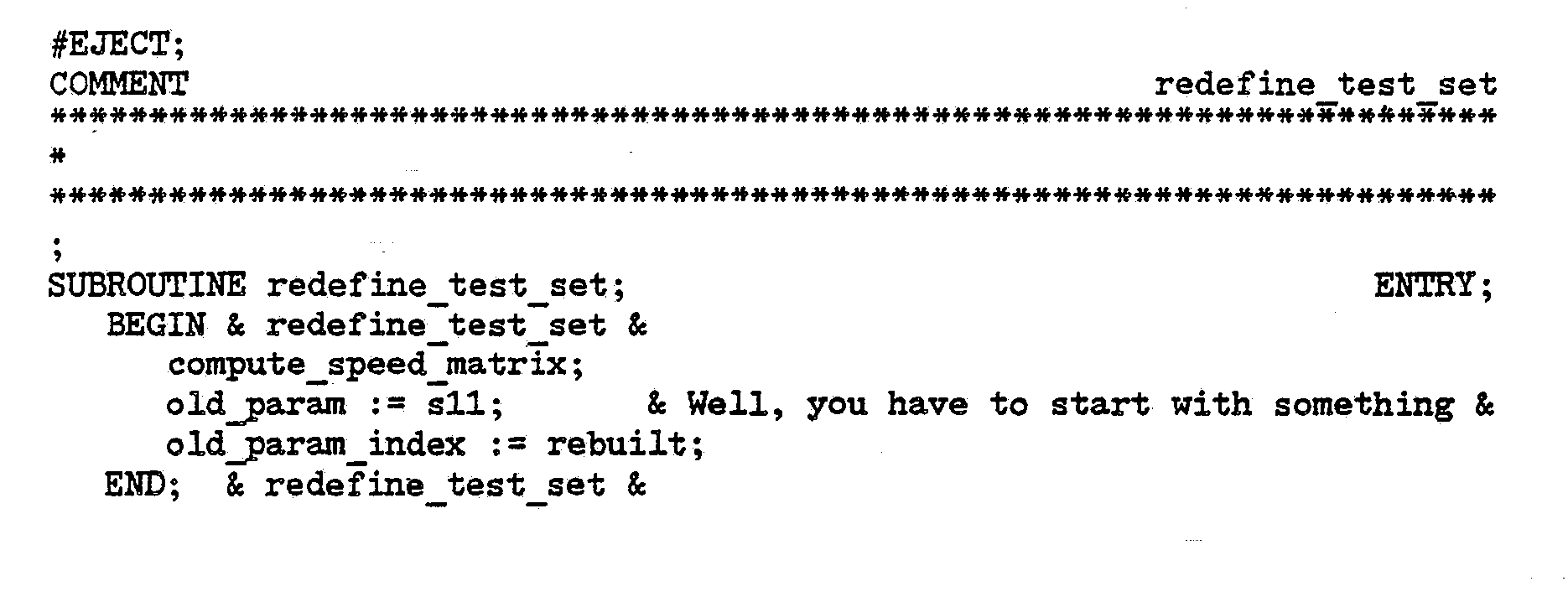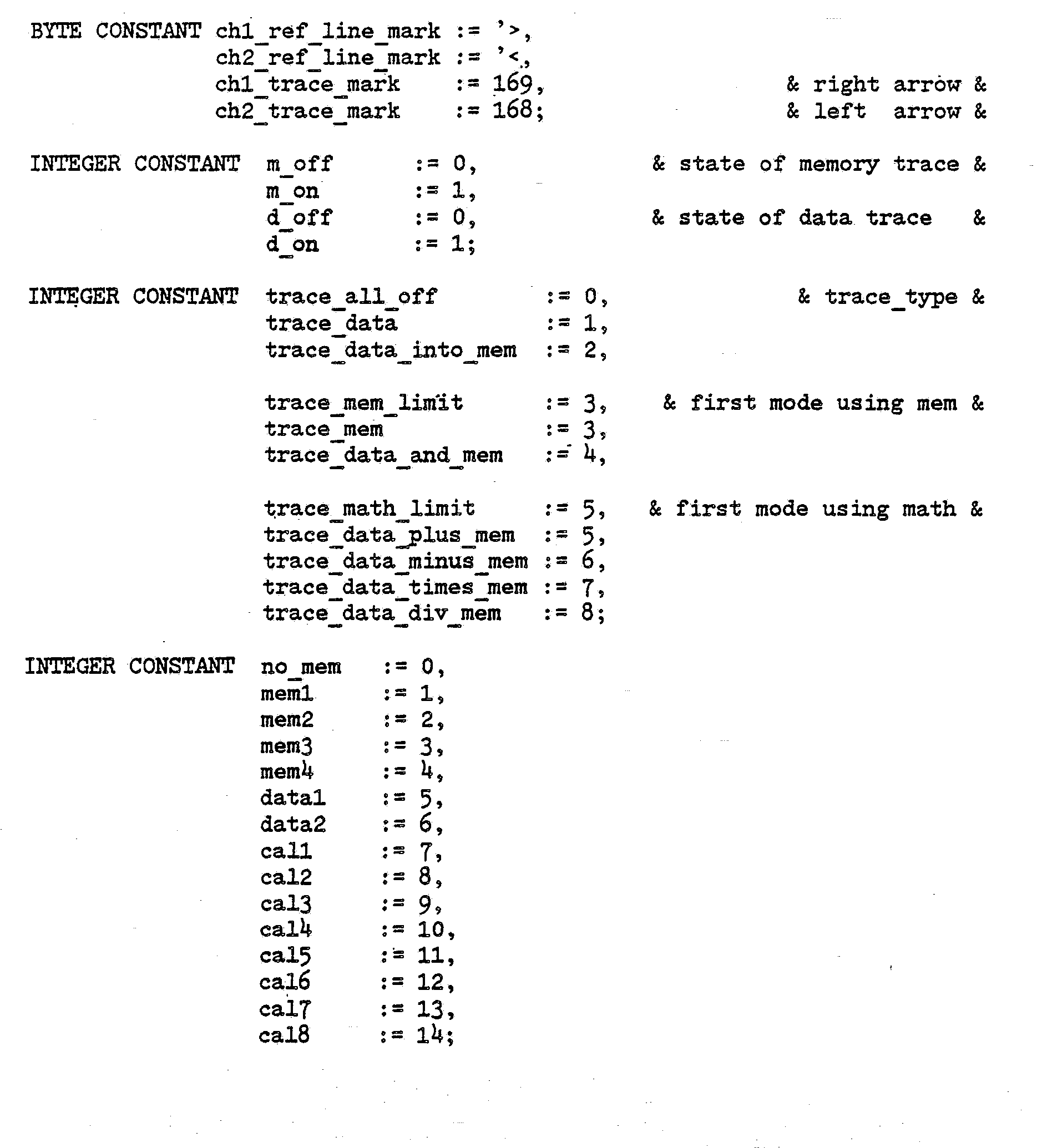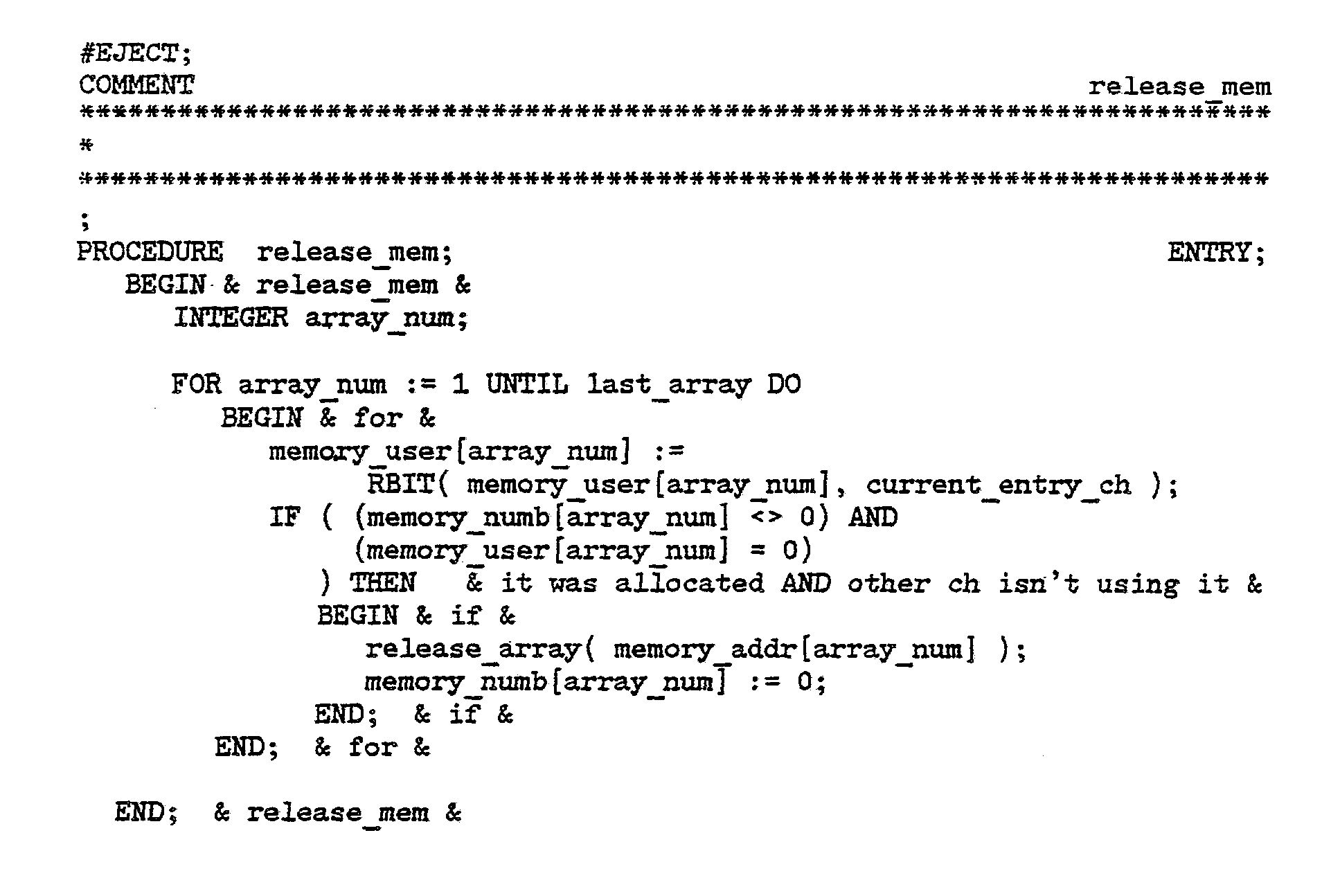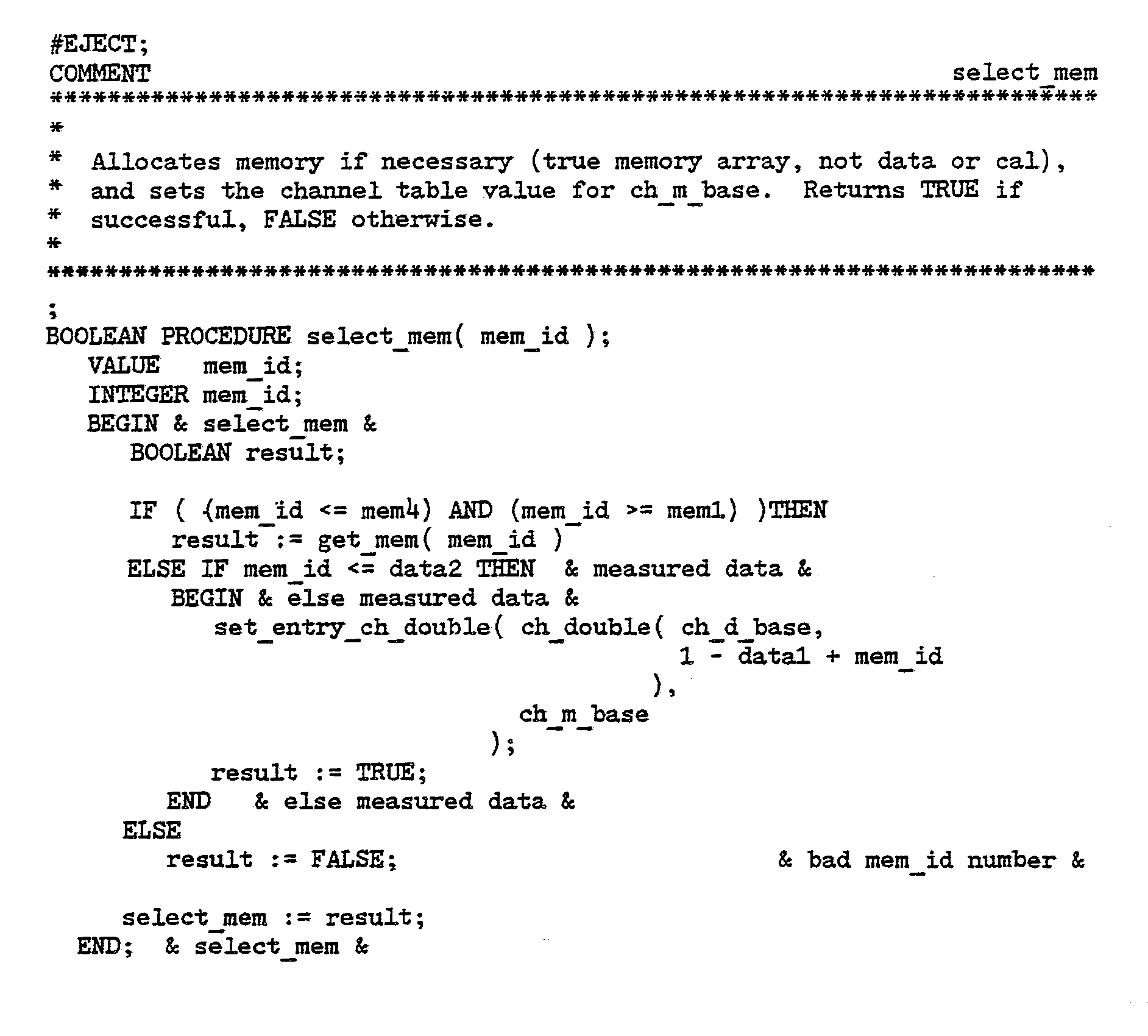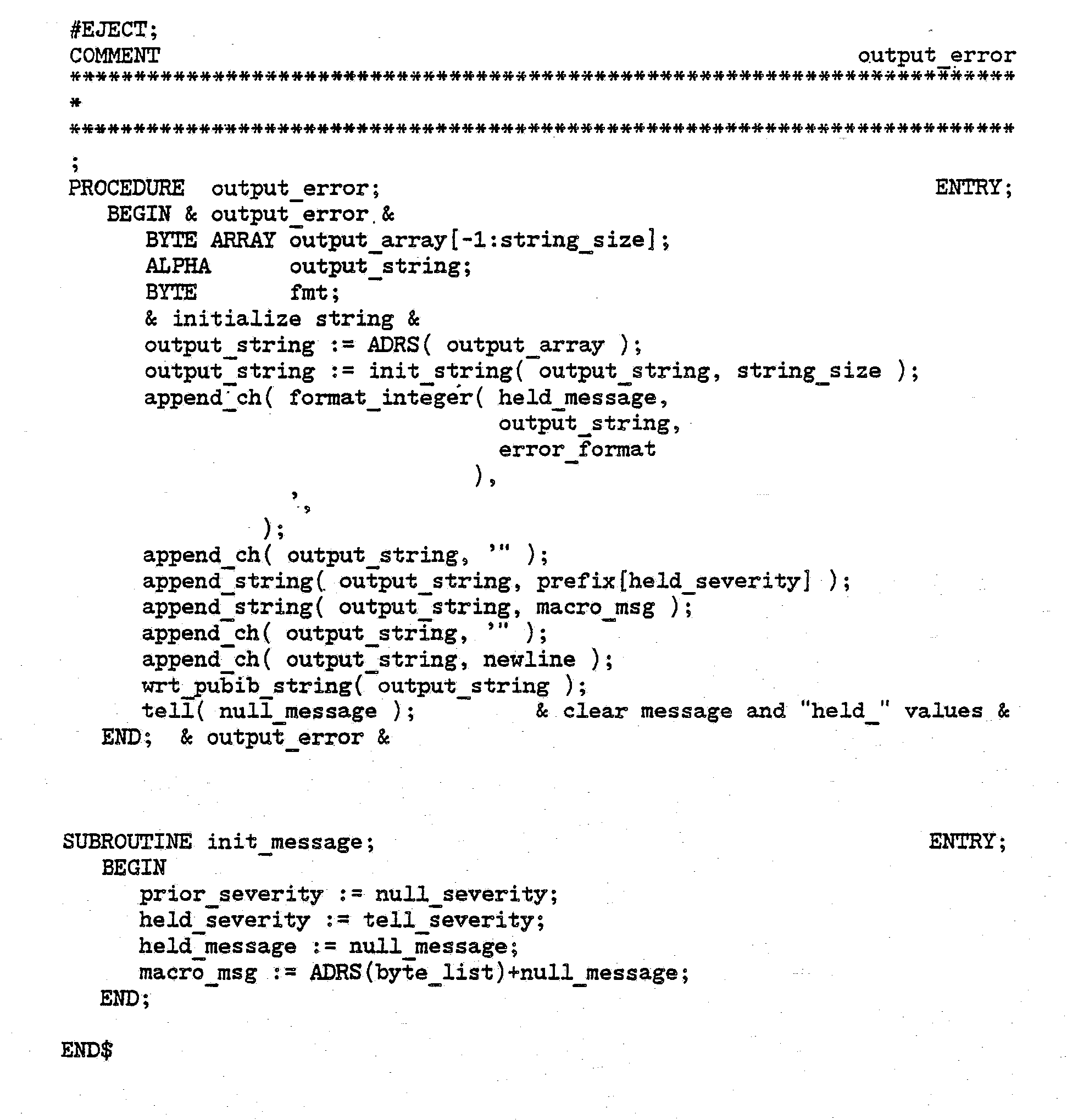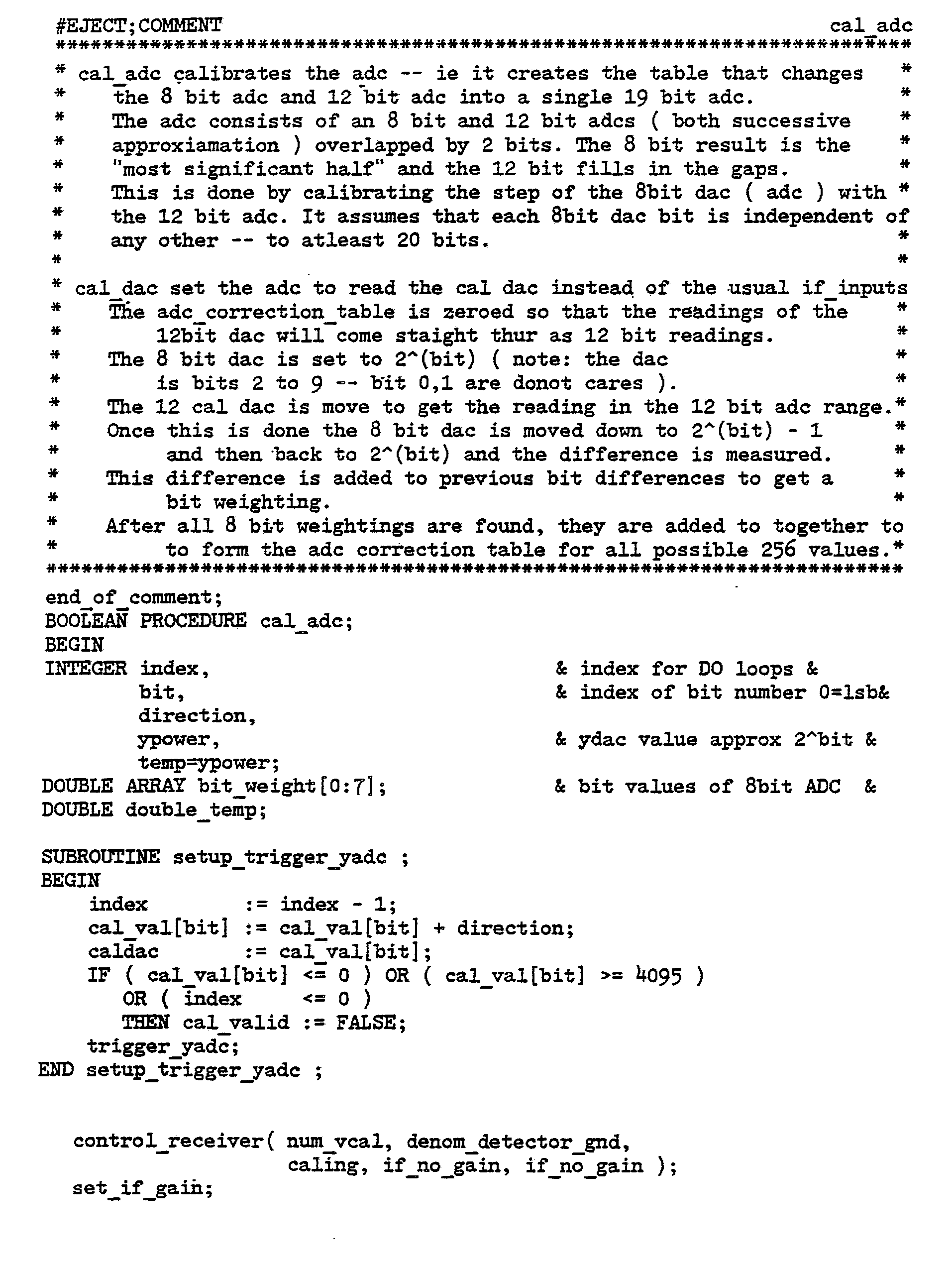EP0150410A1 - Vector network analyzer - Google Patents
Vector network analyzer Download PDFInfo
- Publication number
- EP0150410A1 EP0150410A1 EP84115609A EP84115609A EP0150410A1 EP 0150410 A1 EP0150410 A1 EP 0150410A1 EP 84115609 A EP84115609 A EP 84115609A EP 84115609 A EP84115609 A EP 84115609A EP 0150410 A1 EP0150410 A1 EP 0150410A1
- Authority
- EP
- European Patent Office
- Prior art keywords
- frequency
- signal
- domain signal
- frequency domain
- analyzer
- Prior art date
- Legal status (The legal status is an assumption and is not a legal conclusion. Google has not performed a legal analysis and makes no representation as to the accuracy of the status listed.)
- Granted
Links
Images
Classifications
-
- G—PHYSICS
- G01—MEASURING; TESTING
- G01R—MEASURING ELECTRIC VARIABLES; MEASURING MAGNETIC VARIABLES
- G01R27/00—Arrangements for measuring resistance, reactance, impedance, or electric characteristics derived therefrom
- G01R27/28—Measuring attenuation, gain, phase shift or derived characteristics of electric four pole networks, i.e. two-port networks; Measuring transient response
-
- G—PHYSICS
- G01—MEASURING; TESTING
- G01R—MEASURING ELECTRIC VARIABLES; MEASURING MAGNETIC VARIABLES
- G01R35/00—Testing or calibrating of apparatus covered by the other groups of this subclass
- G01R35/005—Calibrating; Standards or reference devices, e.g. voltage or resistance standards, "golden" references
Definitions
- the present invention relates to a vector network analyzer.
- Vector network analyzers describe networks, including devices, components and systems by measuring the magnitude and phase of the network's transmission and reflection coefficients versus frequency.
- a vector network analysis measurement system contains several separate modules.
- First is an RF source to provide the stimulus to the device under test (DUT).
- the stimulus normally covers a limited range of frequencies, either in a continuous analog sweep, referred to as the swept mode, in discrete steps, referred to as the step mode, or a single point mode.
- Second is a signal separation network to route the stimulus to the DUT and provide a means for sampling the energy that is reflected from, or transmitted through, the DUT. Also, energy is sampled from the signal that is incident upon the DUT in order to provide a reference for all relative measurements.
- Third is a tuned receiver to convert the resulting signals to an intermediate frequency (IF) for further processing. The magnitude and phase relationships of the original signals must be maintained through the frequency conversion to IF to provide usable measurements.
- Fourth is a detector to detect the magnitude and phase characteristics of the IF signals, and fifth is a display on which to present the measurement results.
- Measurement accuracy may be improved by the use of an external computer to implement a process known as vector error correction wherein a set of calibrated devices with known characteristecs is measured and a set of equations is solved with the data to determine the errors associated with the network analyzer itself. This calibration model is then stored in the computer for later correction of data measured on an unknown device.
- the data are displayed and analyzed only in the frequency domain, requiring either the use of a separate instrument such as a time domain reflectometer (TDR) in order to directly measure the response of the DUT as a function of time, or a powerful external computer coupled to the network analyzer to take data in the frequency domain and then perform an inverse Fourier conversion using either a truncated Fourier series or the faster Cooley-Tukey algorithm or others.
- TDR time domain reflectometer
- the traditional TDR approach is fairly fast, the signal to noise ratio is low and the method is susceptible to both jitter and baseline drift.
- former computer coupled network analyzers exhibit significant improvements over the TDR method in signal to noise ratio, jitter, and drift, these systems are very slow, requiring several minutes to provide a time domain analysis and display of a DUT.
- a prior art vector network analyzer is known as the Hewlett-Packard Model 8409C Automatic Network Analyzer described on pages 429 and 459 of the 1983 Hewlett-Packard Electronic Instruments and Systems catalog.
- the network analyzer includes a phase-locked RF source, S parameter test set and a synthesized network analyzer.
- the system is controlled from a desktop computer and vector error correction is accomplished through software utilizing an 8-term or 12-term vector error correction model.
- a further object of the invention is to perform and display the time domain measurements in real time.
- the multi-tasking processor having the features of Claim 16 allows real time processing and display of the time domain measurements.
- the Chirp Z transform utilized in the present invention provides the operator with the response of the DUT as a function of time from the application of the stimulus to the DUT. While the frequency domain response of the DUT is the integrated response over the test frequency range, the time domain response presents the individual responses as a function of distance, permitting identification of specific discontinuities within the DUT and/or the test set. Responses can then be isolated within settable "gates", making it possible to virtually ignore responses outside of the gates. A response within the gate can then be transformed back into the frequency domain if so desired. It thus is possible to "gate out" measurement system responses from cables, connectors, and fixtures to measure the DUT alone.
- the multi-tasking system structure provides time domain data at speeds similar to those of frequency domain measurements, providing substantially real time capability, flexibility, and convenience. Further, the time domain data are computed from error corrected S-parameter measurements, providing the same degree of accuracy for both time and frequency data.
- the measurement system consists first of a main network analyzer 101 with a second IF/detector section 103 and a data proces- sor/display section 105.
- the main network analyzer 101 is fed by one of four configured test sets 107 which provide the signal separation circuitry 108 and first IF frequency conversion circuitry 113 for reflection/transmission (one incident signal) or S-parameter (two incident signals) measurements up to either 18 or 26.5 GHz.
- the frequency converter 113 alone is also available to permit the addition of user supplied signal separation devices 108 for specially configured test needs.
- the third main component of the measurement system is a compatible RF source 109 such as an HP 8340A synthesized sweeper, available from the Hewlett-Packard Co., Palo Alto, California, which can be used in either a stepped frequency mode, in which synthesizer class frequency accuracy and repeatability can be obtained by phase locking the source 109 at each of the over 400 frequency steps over the frequency range selected by the main analyzer 101 or the swept frequency mode for applications where extreme frequency range, high stability, and spectral purity are important such as in narrow band measurements over sweeps of less than 5 MHz.
- An HP 8350B sweeper with HP 83500 series RF plug-ins covering the entire desired frequency range or with lesser spans can also be used in applications where a more economical source is sufficient.
- Both the HP 8340A and the HP 8350B include the necessary analog interface signals as well as full digital handshake compatibility with the main analyzer 101.
- This digital handshake compatibility allows the main analyzer 101 to act as the controller for the entire system by directly managing the source 109 to provide all of the inputs such as start frequency, stop frequency, centering, span, and modulation, as well as constraints that the source 109 normally places on itself internally. Therefore, the user need only be concerned with his interface to the main analyzer 101 and can use any source 109 that has implemented the required handshake protocols. Because the main analyzer 101 is in control of the source 109, it is also possible to automatically select a different frequency range or mode (stepped or swept) to be applied to each of the ports 1 and 2.
- each test set 107 Integrated within each test set 107 is the first IF frequency converter 113 with three channels 113a, 113b, and 113c for reflection/ transmission measurements and four channels 113a, 113b, 113c, and 113d for S-parameter measurements.
- RF to IF conversion is achieved through a sampling technique equivalent to harmonic mixing.
- a harmonic of a tunable local oscillator 115 is produced by a harmonic generator 116 to mix with the incoming RF signal to provide the first IF signal at 20 MHz for the incident signal al on the input port 1, the incident signal a2 on the output port 2, the reflected or transmitted signal bl on the input port 1, and the reflected or transmitted signal b2 on the output port 2.
- Frequency tuning for the local oscillator 115 is controlled by a phase lock loop 117 that compares the signal al or a2 in the reference channel first IF to an IF reference oscillator 119 in the IF/detector section 103. Any difference between the frequency of the signal al or a2 in the reference channel first IF and the IF reference oscillator 119 results in an error voltage on the error voltage signal line 121 via switch 123 that tunes the local oscillator 115 to the frequency that produces the desired first IF. Switch 123 is toggled to select the most appropriate signal al or a2 to lock on to based either on internal criteria within the system or as defined by the user.
- the incident signal port is port 1
- al is selected by switch 123
- a2 is selected by switch 123.
- This scheme allows the local oscilator 115 to track the incoming RF when the RF frequency is changing with time as in the swept mode.
- the integrated test set 107 provides high RF to first IF conversion efficiency even at 26.5 GHz, making possible both high sensitivity and wide dynamic range measurements.
- Amplifier gain is controlled and calibrated digitally and is varied by autoranging to optimize the second IF signal levels on lines 130 and 132 available to the synchronous detectors 131 and 133 resulting in an order of magnitude improvement in signal to noise performance and dynamic accuracy for the detector output signals xl, yl, x2, and y2.
- the synchronous detectors 131 and 133 employ a digital architecture that allows for precise control of their 90 degree phase shift function which results in improved accuracy as well as common mode rejection of local oscillator phase noise effects.
- the detected signals xl, yl, x2, and y2 are multiplexed with a sample-and-hold/multiplexer (MUX) 137 and then digitized by an analog-to-digital converter (ADC) 139 with 19 bits of resolution.
- ADC analog-to-digital converter
- Each ADC conversion takes approximately 40 microseconds and four readings are made for each RF frequency data point to provide the real and imaginary data for both the reference signal on line 130 and test signal on line 132.
- the output of the ADC 139 is then passed on a 16 bit bus 141 to a high speed central processor (CPU) 143 which includes a microprocessor such as a Motorola 68000 as well as the associated microprocesor system interupt and I/0 control circuitry.
- CPU central processor
- the CPU 143 controls the RF source 109, the test set 107, and, along with the sample selection and timing circuitry 146, all of the IF processing functions including the phase lock hardware 125, autoranging in the IF amplifiers 134, detection by the synchronous detectors 131 and 133, and digitization by the ADC 139.
- the CPU 143 periodically initiates a self calibration sequence for the IF amplifiers 134, synchronous detectors 131 and 133, and the ADC 139 and the resulting gain, offset, and circularity changes are stored in memory 147, so that the changes in the IF amplifiers 134 can be subtracted from measured results.
- the CPU 143 also performs all data processing functions for the system.
- the signals in the IF section 103 are detected as linear real and imaginary components of a vector quantity and the CPU 143 processes the detected data into a variety of formats for presentation on the CRT display 149.
- improvemen.ts in dynamic range and meaningful resolution are gained over traditional analog circuit processing techniques.
- the present invention With past network analyzer systems, an external computer was required in order to characterize and remove systematic errors. With the present invention, this capability exists internally with enough storage capacity (i.e., 256K bytes of random access memory (RAM) and 256K bytes of bubble memory) in the memory 147 to retain up to two 401 point 12-term error corrected traces of data.
- the measured data can be converted to show the response of the DUT 111 as a function of time (time domain) using an internal Fourier transform process. All data processing takes place virtually in real time by means of parallel data processing in the CPU 143 aided by the incorporation of a dedicated, floating point, complex number, vector math processor 151 designed specifically for fast vector computations.
- the multiplication of two complex numbers by the vector math processor 151 requires only one operation with the product available within 20 microseconds, so that error corrected measurement results are available 1000 times faster than in the prior art.
- an internal vector graphics generator 153 the real time processed data is then immediately presented on the CRT 149, on a digital printer/plotter 155, or via an IEEE-488 (HP-IB) interface and bus 157 to external devices.
- Present as well as past states of front panel controls 159, past and present traces of data, and entire system calibrations can also be stored in and recalled from the memory 147 or loaded and read from a built-in tape drive 161 by means of the system interface and bus 157 under control of the CPU 143.
- the built-in CPU 143 with its 16-bit multi-tasking microprocessor 201, 1/0 interface circuitry 203, and interrupt system and 1/0 control circuitry 205, and the vector math processor 151 with its math processor circuitry 207 and math controller 209 are key to the high speed performance of the present invention.
- the variable precision and variable function architecture of the vector math processor 151 make it adaptable to perform both floating point and complex number math operations.
- the vector math processor 151 operates on a 16 MHz clock generated within microprocessor 201 and is controlled by a state machine 310 (as shown in Figure 3.12) with 1K byte of ROM for storage of microcode.
- processing power is distributed among several internal controllers in addition to the microprocessor 201 and the math processor 207.
- An additional state machine with 1K byte of microcode storage is used by the display generator 153 to create the display of both data and display formats from a list in the display RAM 217 which drives the CRT 149 in the display section 218 from a line generator 219 which positions a new X-Y point pair approximately every four microseconds.
- both the system bus 145 and the external HP-IB bus 157 have their own internal processors 221 and 223.
- controllers 225, 227, and 229 are dedicated to the tape drive 161, the bubble memory 235 within memory 147, and the front panel 159 respectively.
- Memory is also distributed according to functional need. 16K bytes of ROM 233 within memory 147 are used for internal test software and boot-up of the system.
- the main system software is taken from a first 128K bytes of nonvolatile bubble memory 235 within memory 147 and placed into 128K bytes of main RAM 237 also within memory 147.
- 8K bytes of ROM 239 are dedicated to the bubble memory 235 for use in test and boot-up.
- 60K bytes from the second 128K bytes of bubble memory 235 are used to store equation coefficients used in vector error correction.
- the remaining 68K bytes of bubble memory 235 contain recallable instrument states, measurement memory data and additional system software.
- the contents of the CRT display are stored in 32K bytes of display RAM 217.
- the remaining 96K bytes of display RAM 217 are used for data, coefficients, and control tables. Personal back-up storage, test software, additional system software, and data can be stored and accessed as desired on cartridges in the tape drive 241.
- Figures 3.1 through 3.27 show the detailed schematics of portions of the block diagram shown in figure 2.
- the CPU 143 is shown in figures 3.1-3.11 and 3.23-3.27, with the microprocessor 201 at figure 3.2 and the I/0 interface and Interrupt 203 and 205 at figures 3.23-3.27.
- the ROM 233 is shown at figure 3.5 and RAM 237 is at figures 3.8-3.10.
- the vector math processor 151 as shown in figures 3.12-3.21 is constructed from a series of commercially available medium scale integrated circuits as follows: U56, U74, and U97 are 74S153 multiplexers, U37 is a 745175 D-type flip flop, U91 is a 74LS385 adder, U65-68 and U82-85 are 25LS14 multipliers, and U69-72 and U86-89 are 25LS299 shift registers.
- the state machine 310 is shown in detail in figures 3.12-3.13.
- Figure 4 shows the front panel 159 of the present RF vector network analyzer with the CRT 149.
- Annotation on the CRT 149 includes graticules if desired, labels for one or two data side by side or overlaid data traces, reference line position symbols, and channel labels for the parameter being shown, the format of the display, reference line value, horizontal and vertical scales, and the value of any markers being used.
- Source frequency or other stimulus information is shown on the CRT 149.
- An active entry menu area 409 in which no data traces are displayed is also provided on the CRT 149 for identification of the current active functions which may be selected via the CRT softkeys 411.
- An Entry Off key 413 clears the active entry state.
- a title area 415 is provided for up to 50 characters of information about the measurement beng viewed.
- the Auxiliary Menus System button 417 is pressed, followed by one of the softkeys 411 which will be labeled Title.
- the RPG knob 419 is then rotated to position an arrow symbol below the first letter desired and displayed on the CRT 149.
- the user then presses a Select Letter softkey 411 and the selected letter will appear in the title area 415. This process is repeated as desired along with desired Space softkeys 411 and Backspace keys 411, terminated with the Done softkey 411 and cleared with the Clear Softkey 411.
- Stimulus 423 All basic measurement functions are controlled by the four groups of keys (SPFR) labeled Stimulus 423, Parameter 425, Format 427, and Response 429 which respectively are used to set the stimulus, select the parameter, select the format, and adjust the response for the desired measurement.
- the Stimulus keys 423 provide direct control of the source 109 to set the frequencies, source power, sweep time, and other related functions.
- the Parameter keys 425 select the parameter to be measured. With the source 109 applied to port 1, S 11 is selected for reflection (return loss) and S 21 is selected for transmission (insertion loss or gain). Likewise, with the source 109 applied to port 2, S 22 is selected for reflection and S 12 is selected for transmission. Appropriate control of the test set 107 is enabled automatically depending on the parameter selected.
- the Format keys 427 place measured parameter data in the desired format: logarithmic (dB), phase, group delay, and Smith Chart, or, alternatively, SWR, linear magnitude, R + jX impedance, and others.
- the Response keys 429 set the scale per division, reference value, or reference position, or let the AUTO function via the Auto key 430 automatically place all the measured data on the entire display 149 with pleasing values for a reference value and scale. Additional Response functions include averaging, smoothing, and an electronic line stretcher.
- Figures 5 through 14, 16 and 17 show a typical dual trace measurement of two different parameters S ll and S 12 signified by trace number 601 and 602 respectively with the same log magnitude format used for example to adjust a circulator's impedance and isolation simultaneously in real time.
- Figure 6 shows two overlaid traces 701 and 702 for ports 2 and 3 respectively of a three port multiphase filter.
- Figure 7 shows a single trace of an amplifier and an attenuator combined to show the total closed loop response of the active circuit.
- Figure 8 shows a measurement trace of the same active amplifier as in figure 7 calibrated in a user defined reference plane with an electrical delay of 6.0421 nanoseconds making use of the electronic line stretcher.
- Figure 9 shows a unique split screen of two simultaneous measurements of two different parameters S 11 andS21 as displayed on the CRT 149.
- Figure 10 shows another version of the split screen display, split to simultaneously show the response of a surface accoustical wave filter (SAW device) in both the frequency and time domains. Note the appearance of the triple travel peak 1101 on the time domain response.
- Figure 11 shows two different parameters displayed with two different formats (i.e., SWR and deviation from linear phase) for traces 1201 and 1202.
- Figure 12 shows a previous measured trace 1301 from "memory" and the current measurement trace 1302 of the same parameter S 21 which can be used for matching transmission lines to within 0.01 degrees.
- Figure 13 shows the display of group delay for a typical RF communications filter which with the present invention can be viewed and adjusted for optimum group delay flatness in real time.
- Figure 14 shows a linear display of an RF circuit in the transformed time domain along with a series of five markers 1501-1505 to mark the five different corresponding discontinuities respectively (i.e., connector 1601, connector 1602, adapter 1603, connector 1604, and termination 1606) of a coaxial line 1610 as shown in Figure 15 .
- Figure 16 shows a split screen of two polar plots as displayed simultaneously on the CRT 149.
- Each of the Figures 5 through 15 and 16 are displays of actual RF devices as shown in real time on the CRT 149.
- signal processing in the present invention begins at the output of the synchronous detector pair 131 and 133 which provide the real (X) and imaginary (Y) parts of the test and reference signals, X 2 and Y 2 and X 1 and Y 1 respectively.
- Offset, gain, and quadrature errors are corrected for in both of the IF/detector chains via software which is-arranged in blocks labeled IF gain test 2803 and IF Correction 2805.
- the resulting test and reference data is then ratioed in block 2807 to produce the appropriate S-parameters and stored in the Raw Array 2809. If requested by the user, subsequent data taken at the same frequency are averaged together in the IF Averaging block 2811 to lower system noise and thus enhance dynamic range.
- the Data processing software concurrently removes data from the Raw Array 2809 and performs additional signal processing.
- the Vector Error Correction software 2813 in conjunction with the Vector Math Processor 151 provides corrected data through application of the Error Array 2815 to the Raw Array 2809. Further data manipulation are provided as desired by the user through Gating 2817 along with the separate Gate Array 2819, Electrical Length/Reference Plane Extension 2821, and Parameter Conversion 2822.
- the corrected data may also be converted from the frequency domain to the time domain using Chirp Z transforms.
- Windows 2825 and Window Array 2827 are used to remove the ringing in time domain due to band limited frequency domain input signals and then using the Chirp Z transforms 2823 to transform into the time domain.
- the data in the Data Array 2829 may be stored into memory in the Memory Array 2833 and used in vector computations with data from a second device. Comparisons of present data (D) and memory data (M) is accomplished through vector computations in Data Math block 2831 to provide all four mathematical functions of D * M, D/M, D + M, and D - M. Storage of the corrected and processed data D in the Data Array 2829 and the trace math data M in the Memory Array 2833 allows rapid response to the user when making format or trace math changes.
- the vector data is then formatted in the Format block 2835 into magnitude, phase, group delay, or other formats as desired. Adjacent formatted points can then be combined if desired in the Smoothing block 2837.
- the resulting formatted data is stored into the Format Array 2839 which provides convenient access for scale and offset changes provided by the Scale block 2843. Markers are also applied as desired to the formatted data via the Marker Readout block 2841. Scaled data is stored in a Display Array 2845 in the Display Ram 217 from which the display generator 153 hardware repetitively creates a plot on the CRT 149 for a flicker-free display.
- Input and output access is provided to and from all of the arrays via the HP-IB interface 157 and via tape 161 with S-parameters available from the Data Array 2829 in addition to other applicable arrays.
- Direct printer output for the printer 155 is made from the Format Array 2839.
- Direct plotter output for plotter 155 is made from the Display Array 2845. The user may also trade off the data update rate against the number of data points used by selecting resolutions from 51 to 401 points.
- the software is structured as a multi-tasking system to provide a rapid data update rate by allowing data processing to take place when the data acquisition software is not busy. Overlying command and control tasks interleave data processing with data acquisition cycles to provide both two port error correction and dual channel display modes.
- the software signal process is controlled by a process structure as shown in figure 22.
- This process structure is one of the reasons the present invention can process RF data essentially in real time. For example, low priority processes such as controlling the source 109, controlling the test set 107, and formatting the display 149 are only performed when the data acquisition process is not busy. Previous systems would take data, process it completely through to the display and when the end of each sweep is reached, the processor had to wait for the hardware to reset. Instead, the present invention actually performs processing while control functions such as resetting for a subsequent sweep or switching S parameters are proceeding.
- Processing 2911 processes data from the Raw Array 2809 until the data is displayed on the CRT 149 including vector error correction of external errors, parameter conversion, (gating, windowing, and transformation), trace math (D * M, D/M, D + M, D - M), formatting (log, linear, and delay), and response (scale, reference value, and split screen).
- the machine state variables that are used to derive control variables 2913 include: parameter descriptions such as test set set-up, receiver set-up, and ratio/non-ratio; user selections for frequency, power, sweep time, formats, scale per division, averaging information, number of points to be taken, error correction type, and time domain factors; and, internal housekeeping pointers to the data, raw, error coefficients, corrected data, formatted data, memory data, and display data arrays.
- Acquisition variables 2915 provide data reduced from the control variables 2913 for efficiency that are related to controlling the ADC 139 until the data is stored in the raw array.
- the Acquisition variables 2915 include: IF gain, receiver error, ratioing, averaging, and current pointer position in the raw array.
- the Processing variables 2917 provide data reduced from the group control variables for efficiency that are related to controlling the processing of data from the raw array through the display.
- the Processing variables 2917 include: current position pointers for the arrays, error correction type, time domain information, trace math, format, and response.
- the Signals 2919 provide synchronization between programs that otherwise function independently of one another.
- Gating 2817 is used to look at certain portions of the display as specified by the user via front panel 159. Gating can be used either in the time or frequency domains and provides a gate through which the data can be viewed. This gate is selected by setting a center time and a span (or a start time and a stop time) about which to view the displayed data.
- the frequency domain shape of the gate is calculated and convolved directly with the incoming frequency data as a frequency operation. The result is that no data is eliminated from within the gated region, and when the frequency to time transformation is performed there is no problem with undersampling of the bandlimited time data.
- the gated time domain data maintains its full spectrum of information and can be transformed back into the frequency domain if so desired, without loss of information.
- the actual gating is performed in the frequency domain by means of convolution.
- the typical microwave DUT 111 consists of multiple elements with transmission line sections in between. When tested using conventional frequency domain techniques, a composite response is generated. The specific discontinuities cannot be examined individually.
- the present invention takes its normal frequency domain data and applies for the first time the little known Chirp Z transform, as described by Rabiner and Gold in "Theory and Application of Digital Signal Processing", pages 393-398, 1975, to convert from the frequency to the time domain.
- Prior time transform methods have usually used a conventional fast Fourier technique which required the application of harmonically related frequency inputs and in which the entire frequency window is transformed into the entire time window.
- each data point is separated by only 0.1 nanoseconds and any attempt to view only a portion of the data in the 10 nanosecond wide time window suffers from the availability of only a few data points.
- This can be overcome by taking more data points, but at a drastic reduction in speed.
- Other workers have instead used the classical complete Fourier series expansion of the frequency data to achieve an arbitrary number of viewable data points, but such a method is extremely slow, requiring several minutes to do the necessary calculations.
- the Chirp Z transform also provides an arbitrary number of data points for viewing in any given time window, but this transform can be calculated in less than one second.
- the present system provides two time domain operating modes.
- the first is called low pass and is used to simulate the traditional time domain reflectometer (TDR) but using the Chirp Z transform.
- TDR time domain reflectometer
- Low pass requires harmonically related frequency data from DC, which is extrapolated from the lowest available frequency data point to the maximum frequency available.
- Low pass provides the fastest rise time and best time domain resolution and may be used with either step or impulse excitation. By taking the integral of the low pass impulse response, the response of stimulating the DUT with a step is generated.
- the second time domain operating mode is called band pass and may be used in any frequency span without the need to include DC.
- band pass mode does not require harmonically related frequency data, but only requires excitation frequency steps of equal size (e.g., 10 MHz steps across a span of 1 to 2 GHz).
- Band pass mode is used for either reflection or transmission measurements, typically on bandlimited devices and only impulse excitation may be used.
- FIG. 191 An illustration of the low pass and band pass modes and the excitations used is shown in figures 19.1 through 19.5.
- the frequency domain response for the DUT as shown in figure 19.1 is shown in figure 19.2
- a time domain low pass mode step excitation is shown in figure 19.3
- a time domain low pass mode impulse excitation is shown in figure 19.4
- a time domain band pass mode impulse excitation is shown in figure 19.5. Since there is an upper frequency limit to the data, and at that limit, an abrupt transition occurs from data to no data, time domain responses are subject to ringing and overshoot called the Gibbs phenomena. Ringing interferes with a user's ability to distinguish between two closely spaced real device responses and also creates confusion in separating actual and data reduction produced responses.
- the present invention provides a window capability (not to be confused with gating) to modify and filter the frequency domain data to reduce this ringing in a controlled way as shown in figures 20.1 through 20.4.
- a Kaiser-Bessel window with three different levels of windowing, for three levels 0, 6, and 13 of the Kaiser-Bessel parameter, may be used to attenuate and roll off the higher frequency data, thereby trading resolution for ringing reduction, since the best rise time occurs at minimum (i.e., zero) windowing and the best side- lobe suppression occurs at maximum windowing.
- the minimum windowing provides sidelobes of -14 dB for minimum impulse stimulus width
- the normal amount of windowing provides side lobes of - 50 dB with an increase of a factor of two in the width of the primary response
- the maximum windowing provides side lobes of -9.0 dB with an increase of a factor of four in the width of the primary response.
- FIG. 1 shows a split screen view of the frequency and time display 3301 and 3303 with gating for a 1.5 standing wave ratio (SWR) load.
- Figure 21.2 shows the effect of adding in a reactive mismatch of 12 d8 creating a large ripple effect in the frequency domain 3305.
- Figure 21.3 shows the effect of gating around the load, highlighted with markers 3311 and 3315. Note the high degree of comparison between the frequency domain data 3309 in figure 21.3 with the data 3301 in figure 21.1.
- Figure 21.4 shows this same data from figure 21.3 with the traces 3309 and 3313 overlaid as traces 3317 and 3319 respectively.
Landscapes
- Physics & Mathematics (AREA)
- General Physics & Mathematics (AREA)
- Measurement Of Resistance Or Impedance (AREA)
- Monitoring And Testing Of Transmission In General (AREA)
- Connection Of Plates (AREA)
Abstract
Description
- The present invention relates to a vector network analyzer. Vector network analyzers describe networks, including devices, components and systems by measuring the magnitude and phase of the network's transmission and reflection coefficients versus frequency.
- In general, a vector network analysis measurement system contains several separate modules. First is an RF source to provide the stimulus to the device under test (DUT). The stimulus normally covers a limited range of frequencies, either in a continuous analog sweep, referred to as the swept mode, in discrete steps, referred to as the step mode, or a single point mode. Second is a signal separation network to route the stimulus to the DUT and provide a means for sampling the energy that is reflected from, or transmitted through, the DUT. Also, energy is sampled from the signal that is incident upon the DUT in order to provide a reference for all relative measurements. Third is a tuned receiver to convert the resulting signals to an intermediate frequency (IF) for further processing. The magnitude and phase relationships of the original signals must be maintained through the frequency conversion to IF to provide usable measurements. Fourth is a detector to detect the magnitude and phase characteristics of the IF signals, and fifth is a display on which to present the measurement results.
- Measurement accuracy may be improved by the use of an external computer to implement a process known as vector error correction wherein a set of calibrated devices with known characteristecs is measured and a set of equations is solved with the data to determine the errors associated with the network analyzer itself. This calibration model is then stored in the computer for later correction of data measured on an unknown device.
- Typically, the data are displayed and analyzed only in the frequency domain, requiring either the use of a separate instrument such as a time domain reflectometer (TDR) in order to directly measure the response of the DUT as a function of time, or a powerful external computer coupled to the network analyzer to take data in the frequency domain and then perform an inverse Fourier conversion using either a truncated Fourier series or the faster Cooley-Tukey algorithm or others. Although the traditional TDR approach is fairly fast, the signal to noise ratio is low and the method is susceptible to both jitter and baseline drift. Conversely, although former computer coupled network analyzers exhibit significant improvements over the TDR method in signal to noise ratio, jitter, and drift, these systems are very slow, requiring several minutes to provide a time domain analysis and display of a DUT.
- A prior art vector network analyzer is known as the Hewlett-Packard Model 8409C Automatic Network Analyzer described on
pages 429 and 459 of the 1983 Hewlett-Packard Electronic Instruments and Systems catalog. The network analyzer includes a phase-locked RF source, S parameter test set and a synthesized network analyzer. The system is controlled from a desktop computer and vector error correction is accomplished through software utilizing an 8-term or 12-term vector error correction model. - It is an object of the invention to fully integrate a network analyzer and to enable it to provide a substantially real time measurement of reflection and transmission characteristics of an RF network in response to an RF test signal both in the frequency domain and in the time domain without the necessity of an external computer. This object is achieved with the claimed features.
- A further object of the invention is to perform and display the time domain measurements in real time. The multi-tasking processor having the features of
Claim 16 allows real time processing and display of the time domain measurements. - The Chirp Z transform utilized in the present invention provides the operator with the response of the DUT as a function of time from the application of the stimulus to the DUT. While the frequency domain response of the DUT is the integrated response over the test frequency range, the time domain response presents the individual responses as a function of distance, permitting identification of specific discontinuities within the DUT and/or the test set. Responses can then be isolated within settable "gates", making it possible to virtually ignore responses outside of the gates. A response within the gate can then be transformed back into the frequency domain if so desired. It thus is possible to "gate out" measurement system responses from cables, connectors, and fixtures to measure the DUT alone. The multi-tasking system structure provides time domain data at speeds similar to those of frequency domain measurements, providing substantially real time capability, flexibility, and convenience. Further, the time domain data are computed from error corrected S-parameter measurements, providing the same degree of accuracy for both time and frequency data.
- An embodiment of the invention will now be described in detail with reference to the accompanying drawings.
-
- Figure 1 shows a simplified block diagram of an RF vector network analyzer.
- Figure 2 shows a detailed block diagram of a portion of the RF vector network analyzer shown in figure 1.
- Figures 3.1 through 3.27 show the schematics for a portion of the detailed block diagram as shown in figure 2.
- Figure 4 shows the front panel of the RF vector network analyzer shown in figure 1.
- Figures 5 through 14, 16, and 17 show several of the measurements which can be performed with the RF vector network analyzer shown in figure 1.
- Figure 18 shows the software signal processing flow used in the RF vector network analyzer shown in figure 1.
- Figures 19.1 through 19.5 show the time domain modes used in the RF vector network analyzer shown in figure 1.
- Figures 20.1 through 20.4 show the effect of windowing on time domain data.
- Figures 21.1 through 21.4 show the effect of gating on time domain data in the RF vector network analyzer shown in figure 1.
- Figure 22 illustrates the multi-tasking structure of the processor software utilized in the RF vector network analyzer shown in figure 1.
- Referring to figure 1, there is shown a block diagram of the preferred embodiment. The measurement system consists first of a
main network analyzer 101 with a second IF/detector section 103 and a data proces- sor/display section 105. Themain network analyzer 101 is fed by one of four configuredtest sets 107 which provide thesignal separation circuitry 108 and first IFfrequency conversion circuitry 113 for reflection/transmission (one incident signal) or S-parameter (two incident signals) measurements up to either 18 or 26.5 GHz. Thefrequency converter 113 alone is also available to permit the addition of user suppliedsignal separation devices 108 for specially configured test needs. The third main component of the measurement system is acompatible RF source 109 such as an HP 8340A synthesized sweeper, available from the Hewlett-Packard Co., Palo Alto, California, which can be used in either a stepped frequency mode, in which synthesizer class frequency accuracy and repeatability can be obtained by phase locking thesource 109 at each of the over 400 frequency steps over the frequency range selected by themain analyzer 101 or the swept frequency mode for applications where extreme frequency range, high stability, and spectral purity are important such as in narrow band measurements over sweeps of less than 5 MHz. An HP 8350B sweeper with HP 83500 series RF plug-ins covering the entire desired frequency range or with lesser spans can also be used in applications where a more economical source is sufficient. Both the HP 8340A and the HP 8350B include the necessary analog interface signals as well as full digital handshake compatibility with themain analyzer 101. This digital handshake compatibility allows themain analyzer 101 to act as the controller for the entire system by directly managing thesource 109 to provide all of the inputs such as start frequency, stop frequency, centering, span, and modulation, as well as constraints that thesource 109 normally places on itself internally. Therefore, the user need only be concerned with his interface to themain analyzer 101 and can use anysource 109 that has implemented the required handshake protocols. Because themain analyzer 101 is in control of thesource 109, it is also possible to automatically select a different frequency range or mode (stepped or swept) to be applied to each of theports - Integrated within each
test set 107 is the firstIF frequency converter 113 with threechannels channels local oscillator 115 is produced by aharmonic generator 116 to mix with the incoming RF signal to provide the first IF signal at 20 MHz for the incident signal al on theinput port 1, the incident signal a2 on theoutput port 2, the reflected or transmitted signal bl on theinput port 1, and the reflected or transmitted signal b2 on theoutput port 2. Frequency tuning for thelocal oscillator 115 is controlled by aphase lock loop 117 that compares the signal al or a2 in the reference channel first IF to anIF reference oscillator 119 in the IF/detector section 103. Any difference between the frequency of the signal al or a2 in the reference channel first IF and theIF reference oscillator 119 results in an error voltage on the errorvoltage signal line 121 viaswitch 123 that tunes thelocal oscillator 115 to the frequency that produces the desired first IF.Switch 123 is toggled to select the most appropriate signal al or a2 to lock on to based either on internal criteria within the system or as defined by the user. When using the internal criteria, if the incident signal port isport 1, al is selected byswitch 123, and if the incident signal port isport 2, a2 is selected byswitch 123. This scheme allows thelocal oscilator 115 to track the incoming RF when the RF frequency is changing with time as in the swept mode. The integratedtest set 107 provides high RF to first IF conversion efficiency even at 26.5 GHz, making possible both high sensitivity and wide dynamic range measurements. - Several new concepts have been incorporated in the IF/detector section 103 of the
main analyzer 101 to increase the precision of IF processing and signal detection. Most of thephase lock hardware 125 in the phase lock loop resides in this section 103. Harmonic mixing number and local oscillator pretuning are controlled digitally vialines synchronous detectors mixers 138 and go through a pair ofmultiplexers 136 andvariable gain amplifiers 134 in thesecond IF section 135. Amplifier gain is controlled and calibrated digitally and is varied by autoranging to optimize the second IF signal levels onlines 130 and 132 available to thesynchronous detectors synchronous detectors line 132. - The output of the
ADC 139 is then passed on a 16bit bus 141 to a high speed central processor (CPU) 143 which includes a microprocessor such as a Motorola 68000 as well as the associated microprocesor system interupt and I/0 control circuitry. Because theCPU 143 is integrated into themain network analyzer 101 it is possible to utilize a multi-tasking architecture to make more efficient use of time than has previously been possible. This architectural integration also permits substantial increases in data processing flexibility and system control performance. Via a dedicated system interface andbus 145, theCPU 143 controls theRF source 109, the test set 107, and, along with the sample selection andtiming circuitry 146, all of the IF processing functions including thephase lock hardware 125, autoranging in theIF amplifiers 134, detection by thesynchronous detectors ADC 139. TheCPU 143 periodically initiates a self calibration sequence for theIF amplifiers 134,synchronous detectors ADC 139 and the resulting gain, offset, and circularity changes are stored inmemory 147, so that the changes in theIF amplifiers 134 can be subtracted from measured results. TheCPU 143 also performs all data processing functions for the system. The signals in the IF section 103 are detected as linear real and imaginary components of a vector quantity and theCPU 143 processes the detected data into a variety of formats for presentation on theCRT display 149. By digitally computing the various measurement formats, improvemen.ts in dynamic range and meaningful resolution are gained over traditional analog circuit processing techniques. - With past network analyzer systems, an external computer was required in order to characterize and remove systematic errors. With the present invention, this capability exists internally with enough storage capacity (i.e., 256K bytes of random access memory (RAM) and 256K bytes of bubble memory) in the
memory 147 to retain up to two 401 point 12-term error corrected traces of data. In addition, the measured data can be converted to show the response of the DUT 111 as a function of time (time domain) using an internal Fourier transform process. All data processing takes place virtually in real time by means of parallel data processing in theCPU 143 aided by the incorporation of a dedicated, floating point, complex number,vector math processor 151 designed specifically for fast vector computations. The multiplication of two complex numbers by thevector math processor 151 requires only one operation with the product available within 20 microseconds, so that error corrected measurement results are available 1000 times faster than in the prior art. By means of an internalvector graphics generator 153, the real time processed data is then immediately presented on theCRT 149, on a digital printer/plotter 155, or via an IEEE-488 (HP-IB) interface andbus 157 to external devices. Present as well as past states of front panel controls 159, past and present traces of data, and entire system calibrations can also be stored in and recalled from thememory 147 or loaded and read from a built-intape drive 161 by means of the system interface andbus 157 under control of theCPU 143. - Referring now to figure 2, the built-in
CPU 143 with its 16-bitmulti-tasking microprocessor interface circuitry 203, and interrupt system and 1/0control circuitry 205, and thevector math processor 151 with itsmath processor circuitry 207 andmath controller 209 are key to the high speed performance of the present invention. The variable precision and variable function architecture of thevector math processor 151 make it adaptable to perform both floating point and complex number math operations. Thevector math processor 151 operates on a 16 MHz clock generated withinmicroprocessor 201 and is controlled by a state machine 310 (as shown in Figure 3.12) with 1K byte of ROM for storage of microcode. - To insure maximum processing speed, processing power is distributed among several internal controllers in addition to the
microprocessor 201 and themath processor 207. An additional state machine with 1K byte of microcode storage is used by thedisplay generator 153 to create the display of both data and display formats from a list in thedisplay RAM 217 which drives theCRT 149 in thedisplay section 218 from aline generator 219 which positions a new X-Y point pair approximately every four microseconds. Likewise both thesystem bus 145 and the external HP-IB bus 157 have their owninternal processors controllers tape drive 161, thebubble memory 235 withinmemory 147, and thefront panel 159 respectively. - Memory is also distributed according to functional need. 16K bytes of
ROM 233 withinmemory 147 are used for internal test software and boot-up of the system. The main system software is taken from a first 128K bytes ofnonvolatile bubble memory 235 withinmemory 147 and placed into 128K bytes ofmain RAM 237 also withinmemory 147. 8K bytes ofROM 239 are dedicated to thebubble memory 235 for use in test and boot-up. 60K bytes from the second 128K bytes ofbubble memory 235 are used to store equation coefficients used in vector error correction. The remaining 68K bytes ofbubble memory 235 contain recallable instrument states, measurement memory data and additional system software. The contents of the CRT display are stored in 32K bytes ofdisplay RAM 217. The remaining 96K bytes ofdisplay RAM 217 are used for data, coefficients, and control tables. Personal back-up storage, test software, additional system software, and data can be stored and accessed as desired on cartridges in thetape drive 241. - Figures 3.1 through 3.27 show the detailed schematics of portions of the block diagram shown in figure 2. The
CPU 143 is shown in figures 3.1-3.11 and 3.23-3.27, with themicroprocessor 201 at figure 3.2 and the I/0 interface and Interrupt 203 and 205 at figures 3.23-3.27. TheROM 233 is shown at figure 3.5 andRAM 237 is at figures 3.8-3.10. - The
vector math processor 151 as shown in figures 3.12-3.21 is constructed from a series of commercially available medium scale integrated circuits as follows: U56, U74, and U97 are 74S153 multiplexers, U37 is a 745175 D-type flip flop, U91 is a 74LS385 adder, U65-68 and U82-85 are 25LS14 multipliers, and U69-72 and U86-89 are 25LS299 shift registers. Thestate machine 310 is shown in detail in figures 3.12-3.13. - Figure 4 shows the
front panel 159 of the present RF vector network analyzer with theCRT 149. Annotation on theCRT 149 includes graticules if desired, labels for one or two data side by side or overlaid data traces, reference line position symbols, and channel labels for the parameter being shown, the format of the display, reference line value, horizontal and vertical scales, and the value of any markers being used. Source frequency or other stimulus information is shown on theCRT 149. An activeentry menu area 409 in which no data traces are displayed is also provided on theCRT 149 for identification of the current active functions which may be selected via the CRT softkeys 411. An Entry Off key 413 clears the active entry state. Prompts, indications of instrument functions, procedural instructions, error messages, and procedural advisories also appear on theCRT 149. Atitle area 415 is provided for up to 50 characters of information about the measurement beng viewed. To use the title function, the Auxiliary Menus System button 417 is pressed, followed by one of thesoftkeys 411 which will be labeled Title. The RPG knob 419 is then rotated to position an arrow symbol below the first letter desired and displayed on theCRT 149. The user then presses aSelect Letter softkey 411 and the selected letter will appear in thetitle area 415. This process is repeated as desired along with desiredSpace softkeys 411 andBackspace keys 411, terminated with theDone softkey 411 and cleared with theClear Softkey 411. - All basic measurement functions are controlled by the four groups of keys (SPFR) labeled
Stimulus 423, Parameter 425,Format 427, andResponse 429 which respectively are used to set the stimulus, select the parameter, select the format, and adjust the response for the desired measurement. TheStimulus keys 423 provide direct control of thesource 109 to set the frequencies, source power, sweep time, and other related functions. The Parameter keys 425 select the parameter to be measured. With thesource 109 applied toport 1, S11 is selected for reflection (return loss) and S21 is selected for transmission (insertion loss or gain). Likewise, with thesource 109 applied toport 2, S22 is selected for reflection and S12 is selected for transmission. Appropriate control of the test set 107 is enabled automatically depending on the parameter selected. TheFormat keys 427 place measured parameter data in the desired format: logarithmic (dB), phase, group delay, and Smith Chart, or, alternatively, SWR, linear magnitude, R + jX impedance, and others. TheResponse keys 429 set the scale per division, reference value, or reference position, or let the AUTO function via theAuto key 430 automatically place all the measured data on theentire display 149 with pleasing values for a reference value and scale. Additional Response functions include averaging, smoothing, and an electronic line stretcher. - Several of the wide variety of displays available on the
CRT 149 are shown in Figures 5 through 14, 16 and 17. Figure 5 shows a typical dual trace measurement of two different parameters Sll and S12 signified bytrace number 601 and 602 respectively with the same log magnitude format used for example to adjust a circulator's impedance and isolation simultaneously in real time. Figure 6 shows two overlaid traces 701 and 702 forports CRT 149. Figure 10 shows another version of the split screen display, split to simultaneously show the response of a surface accoustical wave filter (SAW device) in both the frequency and time domains. Note the appearance of thetriple travel peak 1101 on the time domain response. Figure 11 shows two different parameters displayed with two different formats (i.e., SWR and deviation from linear phase) fortraces trace 1301 from "memory" and thecurrent measurement trace 1302 of the same parameter S21 which can be used for matching transmission lines to within 0.01 degrees. Figure 13 shows the display of group delay for a typical RF communications filter which with the present invention can be viewed and adjusted for optimum group delay flatness in real time. Figure 14 shows a linear display of an RF circuit in the transformed time domain along with a series of five markers 1501-1505 to mark the five different corresponding discontinuities respectively (i.e., connector 1601,connector 1602,adapter 1603, connector 1604, and termination 1606) of a coaxial line 1610 as shown in Figure 15 . Figure 16 shows a split screen of two polar plots as displayed simultaneously on theCRT 149. Each of the Figures 5 through 15 and 16 are displays of actual RF devices as shown in real time on theCRT 149. These same displays can also be printed on the printer/plotter 155 as they are shown on theCRT 149 with whatever size change is desired and in a variety of colors. If desired, various of the CRT displays can also be combined on the printer/plotter 155 as a four quadrant plot as shown in Figure 17. - As shown in the software listings in Appendix A and referring now to figure 18, signal processing in the present invention begins at the output of the
synchronous detector pair gain test 2803 and IFCorrection 2805. The resulting test and reference data is then ratioed inblock 2807 to produce the appropriate S-parameters and stored in theRaw Array 2809. If requested by the user, subsequent data taken at the same frequency are averaged together in theIF Averaging block 2811 to lower system noise and thus enhance dynamic range. - While the
Raw Array 2809 is continually filled under control of the data acquisition software which will be discussed shortly, the data processing software concurrently removes data from theRaw Array 2809 and performs additional signal processing. Using a one term model (vector frequency response normalization), a three term model (one port model), and up to a twelve term error correction model (comprehensive two port) of the microwave measurement hardware, the VectorError Correction software 2813 in conjunction with theVector Math Processor 151 provides corrected data through application of theError Array 2815 to theRaw Array 2809. Further data manipulation are provided as desired by the user throughGating 2817 along with the separate Gate Array 2819, Electrical Length/Reference Plane Extension 2821, andParameter Conversion 2822. The corrected data may also be converted from the frequency domain to the time domain using Chirp Z transforms.Windows 2825 and Window Array 2827 are used to remove the ringing in time domain due to band limited frequency domain input signals and then using the Chirp Z transforms 2823 to transform into the time domain. The data in theData Array 2829 may be stored into memory in theMemory Array 2833 and used in vector computations with data from a second device. Comparisons of present data (D) and memory data (M) is accomplished through vector computations inData Math block 2831 to provide all four mathematical functions of D*M, D/M, D + M, and D - M. Storage of the corrected and processed data D in theData Array 2829 and the trace math data M in theMemory Array 2833 allows rapid response to the user when making format or trace math changes. - The vector data is then formatted in the
Format block 2835 into magnitude, phase, group delay, or other formats as desired. Adjacent formatted points can then be combined if desired in theSmoothing block 2837. The resulting formatted data is stored into theFormat Array 2839 which provides convenient access for scale and offset changes provided by theScale block 2843. Markers are also applied as desired to the formatted data via the Marker Readout block 2841. Scaled data is stored in aDisplay Array 2845 in theDisplay Ram 217 from which thedisplay generator 153 hardware repetitively creates a plot on theCRT 149 for a flicker-free display. - Input and output access is provided to and from all of the arrays via the HP-
IB interface 157 and viatape 161 with S-parameters available from theData Array 2829 in addition to other applicable arrays. Direct printer output for theprinter 155 is made from theFormat Array 2839. Direct plotter output forplotter 155 is made from theDisplay Array 2845. The user may also trade off the data update rate against the number of data points used by selecting resolutions from 51 to 401 points. - The software is structured as a multi-tasking system to provide a rapid data update rate by allowing data processing to take place when the data acquisition software is not busy. Overlying command and control tasks interleave data processing with data acquisition cycles to provide both two port error correction and dual channel display modes.
- The software signal process is controlled by a process structure as shown in figure 22. This process structure is one of the reasons the present invention can process RF data essentially in real time. For example, low priority processes such as controlling the
source 109, controlling the test set 107, and formatting thedisplay 149 are only performed when the data acquisition process is not busy. Previous systems would take data, process it completely through to the display and when the end of each sweep is reached, the processor had to wait for the hardware to reset. Instead, the present invention actually performs processing while control functions such as resetting for a subsequent sweep or switching S parameters are proceeding. TheCommand Sources 2901 accept user commands via thefront panels 159 and the HP-IB interface 157, parses and converts the commands to a common internal command token regardless of source and puts the commands into acommand queue 2903. TheCommand Processor 2905 takes the commands from thecommand queue 2903 and implements them. Any one time precomputa- tion that will later improve run time efficiency is done at this time. TheCommand Processor 2905 modifies the instrument state and performs one time operations, such as updating a trace after a scale change, outputting an array of data, and copying the Data Array into the Memory Array. Based on the instrument state,Control 2907 is responsible for insuring that the desired data is acquired in the specified manner and conditions. This includes control ofsource 109, test set 107,phase lock 125, IFmultiplexers 136,ADC 139, and set up of the data acquisition and processing. Swept and stepped, alternate and chopped, single and continuous signal sweeps are implemented withinControl 2907. Sweep maintenance is also managed in theControl 2907 to keep track of bandcrossings and frequency stepping. Acquisition 2909 services theADC 139 interrupt, IF gain autoranging, ratioing, averaging and storing data into theRaw Array 2809. Processing 2911 processes data from theRaw Array 2809 until the data is displayed on theCRT 149 including vector error correction of external errors, parameter conversion, (gating, windowing, and transformation), trace math (D*M, D/M, D + M, D - M), formatting (log, linear, and delay), and response (scale, reference value, and split screen). - The machine state variables that are used to derive
control variables 2913 include: parameter descriptions such as test set set-up, receiver set-up, and ratio/non-ratio; user selections for frequency, power, sweep time, formats, scale per division, averaging information, number of points to be taken, error correction type, and time domain factors; and, internal housekeeping pointers to the data, raw, error coefficients, corrected data, formatted data, memory data, and display data arrays. Acquisition variables 2915 provide data reduced from thecontrol variables 2913 for efficiency that are related to controlling theADC 139 until the data is stored in the raw array. The Acquisition variables 2915 include: IF gain, receiver error, ratioing, averaging, and current pointer position in the raw array. TheProcessing variables 2917 provide data reduced from the group control variables for efficiency that are related to controlling the processing of data from the raw array through the display. TheProcessing variables 2917 include: current position pointers for the arrays, error correction type, time domain information, trace math, format, and response. TheSignals 2919 provide synchronization between programs that otherwise function independently of one another. -
Gating 2817 is used to look at certain portions of the display as specified by the user viafront panel 159. Gating can be used either in the time or frequency domains and provides a gate through which the data can be viewed. This gate is selected by setting a center time and a span (or a start time and a stop time) about which to view the displayed data. When gates are desired, rather than removing time domain data outside of the gate from the data being used to calculate the displayed data, in the present invention the frequency domain shape of the gate is calculated and convolved directly with the incoming frequency data as a frequency operation. The result is that no data is eliminated from within the gated region, and when the frequency to time transformation is performed there is no problem with undersampling of the bandlimited time data. The result is that the gated time domain data maintains its full spectrum of information and can be transformed back into the frequency domain if so desired, without loss of information. Thus, even though the user can perform the setting of gates while viewing the time domain data, the actual gating is performed in the frequency domain by means of convolution. - The typical microwave DUT 111 consists of multiple elements with transmission line sections in between. When tested using conventional frequency domain techniques, a composite response is generated. The specific discontinuities cannot be examined individually. The present invention takes its normal frequency domain data and applies for the first time the little known Chirp Z transform, as described by Rabiner and Gold in "Theory and Application of Digital Signal Processing", pages 393-398, 1975, to convert from the frequency to the time domain. Prior time transform methods have usually used a conventional fast Fourier technique which required the application of harmonically related frequency inputs and in which the entire frequency window is transformed into the entire time window. For example, when a 10 nanosecond wide time window is viewed with 101 data points, each data point is separated by only 0.1 nanoseconds and any attempt to view only a portion of the data in the 10 nanosecond wide time window suffers from the availability of only a few data points. This can be overcome by taking more data points, but at a drastic reduction in speed. Other workers have instead used the classical complete Fourier series expansion of the frequency data to achieve an arbitrary number of viewable data points, but such a method is extremely slow, requiring several minutes to do the necessary calculations. As with the complete Fourier series expansion, the Chirp Z transform also provides an arbitrary number of data points for viewing in any given time window, but this transform can be calculated in less than one second.
- The present system provides two time domain operating modes. The first is called low pass and is used to simulate the traditional time domain reflectometer (TDR) but using the Chirp Z transform. Like the traditional TDR, low pass requires harmonically related frequency data from DC, which is extrapolated from the lowest available frequency data point to the maximum frequency available. Low pass provides the fastest rise time and best time domain resolution and may be used with either step or impulse excitation. By taking the integral of the low pass impulse response, the response of stimulating the DUT with a step is generated. The second time domain operating mode is called band pass and may be used in any frequency span without the need to include DC. Because of the use of the Chirp Z transform, band pass mode does not require harmonically related frequency data, but only requires excitation frequency steps of equal size (e.g., 10 MHz steps across a span of 1 to 2 GHz). Band pass mode is used for either reflection or transmission measurements, typically on bandlimited devices and only impulse excitation may be used.
- An illustration of the low pass and band pass modes and the excitations used is shown in figures 19.1 through 19.5. The frequency domain response for the DUT as shown in figure 19.1 is shown in figure 19.2, while a time domain low pass mode step excitation is shown in figure 19.3, a time domain low pass mode impulse excitation is shown in figure 19.4, and a time domain band pass mode impulse excitation is shown in figure 19.5. Since there is an upper frequency limit to the data, and at that limit, an abrupt transition occurs from data to no data, time domain responses are subject to ringing and overshoot called the Gibbs phenomena. Ringing interferes with a user's ability to distinguish between two closely spaced real device responses and also creates confusion in separating actual and data reduction produced responses. The present invention provides a window capability (not to be confused with gating) to modify and filter the frequency domain data to reduce this ringing in a controlled way as shown in figures 20.1 through 20.4. A Kaiser-Bessel window with three different levels of windowing, for three
levels - As mentioned previously, gating is a further powerful feature of the time domain capability in the present invention and is illustrated in figures 21.1 through 21.4. Figure 21.1 shows a split screen view of the frequency and
time display frequency domain 3305. Figure 21.3 shows the effect of gating around the load, highlighted withmarkers frequency domain data 3309 in figure 21.3 with thedata 3301 in figure 21.1. Figure 21.4 shows this same data from figure 21.3 with thetraces traces
Claims (16)
Applications Claiming Priority (2)
| Application Number | Priority Date | Filing Date | Title |
|---|---|---|---|
| US06/569,622 US4703433A (en) | 1984-01-09 | 1984-01-09 | Vector network analyzer with integral processor |
| US569622 | 1984-01-09 |
Publications (2)
| Publication Number | Publication Date |
|---|---|
| EP0150410A1 true EP0150410A1 (en) | 1985-08-07 |
| EP0150410B1 EP0150410B1 (en) | 1988-12-07 |
Family
ID=24276161
Family Applications (1)
| Application Number | Title | Priority Date | Filing Date |
|---|---|---|---|
| EP84115609A Expired EP0150410B1 (en) | 1984-01-09 | 1984-12-17 | Vector network analyzer |
Country Status (4)
| Country | Link |
|---|---|
| US (1) | US4703433A (en) |
| EP (1) | EP0150410B1 (en) |
| JP (1) | JPH0654334B2 (en) |
| DE (1) | DE3475571D1 (en) |
Cited By (6)
| Publication number | Priority date | Publication date | Assignee | Title |
|---|---|---|---|---|
| EP0420767A1 (en) * | 1989-09-29 | 1991-04-03 | Ab Millimetre | Vector analyser for millimeter and/or submillimeter network |
| EP0626588A1 (en) * | 1993-05-24 | 1994-11-30 | Atn Microwave, Inc. | Electronic calibration method and apparatus |
| US5434511A (en) * | 1993-05-24 | 1995-07-18 | Atn Microwave, Inc. | Electronic microwave calibration device |
| WO2002011003A1 (en) * | 2000-07-07 | 2002-02-07 | Anritsu Corporation | Instructive demonstration method of a measuring device using a network, and system for the method |
| EP3499382A1 (en) * | 2017-12-04 | 2019-06-19 | ETS-Lindgren Inc. | Spectrum extension edgeless gating for reduced time domain gating edge errors |
| CN113945772A (en) * | 2021-10-14 | 2022-01-18 | 中国电子科技集团公司第四十一研究所 | Rapid continuous point measurement system and method based on vector network analyzer |
Families Citing this family (77)
| Publication number | Priority date | Publication date | Assignee | Title |
|---|---|---|---|---|
| JPS61174674U (en) * | 1985-04-22 | 1986-10-30 | ||
| US4841437A (en) * | 1985-09-18 | 1989-06-20 | Lp Com | System architecture for a test apparatus having primary and dependent processors |
| US5295151A (en) * | 1985-10-22 | 1994-03-15 | The United States Of America As Represented By The Secretary Of The Army | Transition detection circuit for PSK signals using the SAW Chirp-Z algorithm (U) |
| DE3634528C1 (en) * | 1986-10-10 | 1988-04-14 | Rohde & Schwarz | Circuit for compensating the frequency response of a spectrum analyzer |
| US4858159A (en) * | 1987-10-19 | 1989-08-15 | Hewlett-Packard Company | Frequency-tuneable filter calibration |
| US4782284A (en) * | 1988-01-12 | 1988-11-01 | Bsr North America Ltd. | Frequency analyzer |
| US4921347A (en) * | 1988-01-25 | 1990-05-01 | Hewlett-Packard Company | Method and apparatus for calibrating a lightwave component measurement system |
| US4858160A (en) * | 1988-03-18 | 1989-08-15 | Cascade Microtech, Inc. | System for setting reference reactance for vector corrected measurements |
| US4995006A (en) * | 1988-03-31 | 1991-02-19 | Wiltron Company | Apparatus and method for low-pass equivalent processing |
| US4958294A (en) * | 1988-04-01 | 1990-09-18 | Wavetek Microwave, Inc. | Swept microwave power measurement system and method |
| JPH0716119B2 (en) * | 1988-07-16 | 1995-02-22 | 株式会社巴川製紙所 | Method for manufacturing conductive sheet |
| US4977395A (en) * | 1989-01-31 | 1990-12-11 | The United States Of America As Represented By The Administrator Of The National Aeronautics And Space Administration | Vibration analyzer |
| US4974167A (en) * | 1989-02-28 | 1990-11-27 | Tektronix, Inc. | Erasable data acquisition and storage instrument |
| CA2030272C (en) * | 1989-11-24 | 1995-06-27 | David R. Brunfeldt | Vector network analyzer |
| US5051916A (en) * | 1990-01-12 | 1991-09-24 | Tektronix, Inc. | Stimulus signal generation method to maximize dynamic range in frequency response function calculations |
| US5414713A (en) * | 1990-02-05 | 1995-05-09 | Synthesis Research, Inc. | Apparatus for testing digital electronic channels |
| US5262957A (en) * | 1990-11-09 | 1993-11-16 | Global Communications, Inc. | Inexpensive portable RF spectrum analyzer with calibration features |
| US5521512A (en) * | 1993-08-16 | 1996-05-28 | The Penn State Research Foundation | Time domain reflectometer using successively delayed test pulses and an interleaved sampling procedure |
| US5587934A (en) * | 1993-10-21 | 1996-12-24 | Wiltron Company | Automatic VNA calibration apparatus |
| US5745777A (en) * | 1994-05-10 | 1998-04-28 | Seiko Communications Holding N.V. | Analyzer for frequency modulated signals |
| US5451627A (en) * | 1994-07-21 | 1995-09-19 | Rohm And Haas Company | Aqueous fast drying aerosol coating composition comprising a blend of acrylic polymers |
| US5548538A (en) * | 1994-12-07 | 1996-08-20 | Wiltron Company | Internal automatic calibrator for vector network analyzers |
| US5946471A (en) * | 1995-08-10 | 1999-08-31 | University Of Cincinnati | Method and apparatus for emulating laboratory instruments at remote stations configured by a network controller |
| US6208946B1 (en) | 1997-09-30 | 2001-03-27 | Advantest Corp. | High speed fourier transform apparatus |
| TW435020B (en) * | 1998-12-28 | 2001-05-16 | Nat Science Council | A vector network analyzer architecture based on sliding correlator techniques |
| US6445202B1 (en) | 1999-06-30 | 2002-09-03 | Cascade Microtech, Inc. | Probe station thermal chuck with shielding for capacitive current |
| US6230106B1 (en) | 1999-10-13 | 2001-05-08 | Modulation Instruments | Method of characterizing a device under test |
| US6370484B1 (en) * | 2000-02-25 | 2002-04-09 | Agilent Technologies, Inc. | Signal analyzer having independent analysis and display scales |
| US6366097B1 (en) * | 2000-04-26 | 2002-04-02 | Verizon Laboratories Inc. | Technique for the measurement of reflection coefficients in stored energy systems |
| US6914423B2 (en) | 2000-09-05 | 2005-07-05 | Cascade Microtech, Inc. | Probe station |
| US6965226B2 (en) | 2000-09-05 | 2005-11-15 | Cascade Microtech, Inc. | Chuck for holding a device under test |
| DE10124371A1 (en) * | 2001-05-18 | 2002-11-21 | Rohde & Schwarz | Measurement unit, especially a signal generator has a number of function units that can be connected in different manners and a control unit that determines their connections and represents them on a graphical display |
| DE10211334B4 (en) * | 2002-03-14 | 2010-07-22 | Rohde & Schwarz Gmbh & Co. Kg | A method of measuring effective directivity and / or effective source turret fitting of a system calibrated vectorial network analyzer and calibration standard set |
| US7492172B2 (en) | 2003-05-23 | 2009-02-17 | Cascade Microtech, Inc. | Chuck for holding a device under test |
| US7250626B2 (en) | 2003-10-22 | 2007-07-31 | Cascade Microtech, Inc. | Probe testing structure |
| KR20070009541A (en) * | 2003-11-25 | 2007-01-18 | 더 맥엘리스 컴퍼니즈 인코포레이티드 디.비.에이. 세이프 죤 시스템즈 | Object detection method and apparatus |
| US7187188B2 (en) | 2003-12-24 | 2007-03-06 | Cascade Microtech, Inc. | Chuck with integrated wafer support |
| US7457995B1 (en) * | 2004-02-02 | 2008-11-25 | Litepoint Corp. | Method and apparatus for generating reference transmission signal for use in testing communications receivers |
| US7479878B2 (en) * | 2004-07-28 | 2009-01-20 | Senstar-Stellar Corporation | Triboelectric, ranging, or dual use security sensor cable and method of manufacturing same |
| US7656172B2 (en) | 2005-01-31 | 2010-02-02 | Cascade Microtech, Inc. | System for testing semiconductors |
| US7535247B2 (en) | 2005-01-31 | 2009-05-19 | Cascade Microtech, Inc. | Interface for testing semiconductors |
| US7751470B2 (en) * | 2005-02-07 | 2010-07-06 | Tektronix, Inc. | Time correlation of signal power to distortion characteristics |
| US20060198431A1 (en) * | 2005-03-02 | 2006-09-07 | Turpin John F | Activity monitor for multiple RF channels |
| CN101578532A (en) * | 2005-05-12 | 2009-11-11 | 麦卡利斯有限公司 | Object detection method and apparatus |
| US20060274084A1 (en) * | 2005-06-06 | 2006-12-07 | Chenjing Fernando | Table data entry using instrument markers |
| US7518353B2 (en) * | 2006-04-07 | 2009-04-14 | Agilent Technologies, Inc. | Vector network analysis system and method using offset stimulus signals |
| US8319503B2 (en) | 2008-11-24 | 2012-11-27 | Cascade Microtech, Inc. | Test apparatus for measuring a characteristic of a device under test |
| US8729440B2 (en) | 2009-03-02 | 2014-05-20 | Harris Corporation | Applicator and method for RF heating of material |
| US9034176B2 (en) | 2009-03-02 | 2015-05-19 | Harris Corporation | Radio frequency heating of petroleum ore by particle susceptors |
| US8133384B2 (en) * | 2009-03-02 | 2012-03-13 | Harris Corporation | Carbon strand radio frequency heating susceptor |
| US8494775B2 (en) * | 2009-03-02 | 2013-07-23 | Harris Corporation | Reflectometry real time remote sensing for in situ hydrocarbon processing |
| US8101068B2 (en) * | 2009-03-02 | 2012-01-24 | Harris Corporation | Constant specific gravity heat minimization |
| US8674274B2 (en) * | 2009-03-02 | 2014-03-18 | Harris Corporation | Apparatus and method for heating material by adjustable mode RF heating antenna array |
| US8120369B2 (en) * | 2009-03-02 | 2012-02-21 | Harris Corporation | Dielectric characterization of bituminous froth |
| US8128786B2 (en) | 2009-03-02 | 2012-03-06 | Harris Corporation | RF heating to reduce the use of supplemental water added in the recovery of unconventional oil |
| US8887810B2 (en) * | 2009-03-02 | 2014-11-18 | Harris Corporation | In situ loop antenna arrays for subsurface hydrocarbon heating |
| US20110234239A1 (en) * | 2010-03-23 | 2011-09-29 | Constant Wave, Inc. | Two-Port De-Embedding Using Time Domain Substitution |
| US20110238383A1 (en) * | 2010-03-23 | 2011-09-29 | Metzger Donald W | One-Port De-embedding Using Time Domain Substitution |
| US8695702B2 (en) | 2010-06-22 | 2014-04-15 | Harris Corporation | Diaxial power transmission line for continuous dipole antenna |
| US8648760B2 (en) | 2010-06-22 | 2014-02-11 | Harris Corporation | Continuous dipole antenna |
| US8450664B2 (en) | 2010-07-13 | 2013-05-28 | Harris Corporation | Radio frequency heating fork |
| US8763691B2 (en) | 2010-07-20 | 2014-07-01 | Harris Corporation | Apparatus and method for heating of hydrocarbon deposits by axial RF coupler |
| US8772683B2 (en) | 2010-09-09 | 2014-07-08 | Harris Corporation | Apparatus and method for heating of hydrocarbon deposits by RF driven coaxial sleeve |
| US8692170B2 (en) | 2010-09-15 | 2014-04-08 | Harris Corporation | Litz heating antenna |
| US8646527B2 (en) | 2010-09-20 | 2014-02-11 | Harris Corporation | Radio frequency enhanced steam assisted gravity drainage method for recovery of hydrocarbons |
| US8789599B2 (en) | 2010-09-20 | 2014-07-29 | Harris Corporation | Radio frequency heat applicator for increased heavy oil recovery |
| US8511378B2 (en) | 2010-09-29 | 2013-08-20 | Harris Corporation | Control system for extraction of hydrocarbons from underground deposits |
| US8373516B2 (en) | 2010-10-13 | 2013-02-12 | Harris Corporation | Waveguide matching unit having gyrator |
| US8616273B2 (en) | 2010-11-17 | 2013-12-31 | Harris Corporation | Effective solvent extraction system incorporating electromagnetic heating |
| US8443887B2 (en) | 2010-11-19 | 2013-05-21 | Harris Corporation | Twinaxial linear induction antenna array for increased heavy oil recovery |
| US8763692B2 (en) | 2010-11-19 | 2014-07-01 | Harris Corporation | Parallel fed well antenna array for increased heavy oil recovery |
| US8453739B2 (en) | 2010-11-19 | 2013-06-04 | Harris Corporation | Triaxial linear induction antenna array for increased heavy oil recovery |
| US8877041B2 (en) | 2011-04-04 | 2014-11-04 | Harris Corporation | Hydrocarbon cracking antenna |
| CN103675448B (en) * | 2013-12-16 | 2017-04-19 | 中国电子科技集团公司第四十一研究所 | Vector measurement method for passive intermodulation interference |
| JP6611441B2 (en) | 2014-02-28 | 2019-11-27 | 地方独立行政法人東京都立産業技術研究センター | Frequency conversion unit, measurement system, and measurement method |
| US10198276B2 (en) * | 2015-12-18 | 2019-02-05 | Rohde & Schwarz Ghbh & Co. Kg | Configuration of a frequency converter, frequency converter kit and method for configuring a frequency converter |
| KR102607382B1 (en) * | 2021-01-11 | 2023-11-29 | 국방과학연구소 | Prognostic method of circuit health and apparatus thereof |
Family Cites Families (12)
| Publication number | Priority date | Publication date | Assignee | Title |
|---|---|---|---|---|
| JPS5028132B1 (en) * | 1969-06-20 | 1975-09-12 | ||
| US3876946A (en) * | 1973-10-31 | 1975-04-08 | Singer Co | Radio frequency digital fourier analyzer |
| US3973112A (en) * | 1974-07-29 | 1976-08-03 | Time/Data Corporation | System for determining transfer function |
| US4034191A (en) * | 1974-08-05 | 1977-07-05 | Varian Associates, Inc. | Spectrometer means employing linear synthesized RF excitation |
| US4134149A (en) * | 1976-03-26 | 1979-01-09 | Norland Corporation | High sweep rate waveform display control for digital recording waveform devices |
| US4072851A (en) * | 1976-03-26 | 1978-02-07 | Norland Corporation | Waveform measuring instrument with resident programmed processor for controlled waveform display and waveform data reduction and calculation |
| US4104725A (en) * | 1976-03-26 | 1978-08-01 | Norland Corporation | Programmed calculating input signal module for waveform measuring and analyzing instrument |
| US4093988A (en) * | 1976-11-08 | 1978-06-06 | General Electric Company | High speed frequency response measurement |
| JPS6016582B2 (en) * | 1977-03-04 | 1985-04-26 | 日本電気株式会社 | Digital frequency analyzer |
| US4244024A (en) * | 1978-08-10 | 1981-01-06 | Hewlett-Packard Company | Spectrum analyzer having enterable offsets and automatic display zoom |
| JPS5926902B2 (en) * | 1979-03-31 | 1984-07-02 | アンリツ株式会社 | Frequency marker display device |
| US4430611A (en) * | 1981-07-29 | 1984-02-07 | The United States Of America As Represented By The United States Department Of Energy | Frequency spectrum analyzer with phase-lock |
-
1984
- 1984-01-09 US US06/569,622 patent/US4703433A/en not_active Expired - Lifetime
- 1984-12-17 EP EP84115609A patent/EP0150410B1/en not_active Expired
- 1984-12-17 DE DE8484115609T patent/DE3475571D1/en not_active Expired
-
1985
- 1985-01-09 JP JP60002624A patent/JPH0654334B2/en not_active Expired - Lifetime
Non-Patent Citations (6)
| Title |
|---|
| ELECTRO/78 CONF. RECORD, May 1978; J.O. TAYLOR "Automated microwave measurements at millimeter wave frequencies", pages (17/5) 1-7 * |
| HEWLETT-PACKARD CATALOGUE, Electronics for measurements, analysers, computers, 1969, Palo Alto, California, USA; "Network Analyzers", pages 478-479 * |
| IEE PROCEEDINGS - H, vol. 127, no. 2, April 1980, Herts, GB; P.R. RIGG et al. "Low-cost computer-based time-domain microwave network analyser", pages 107-111 * |
| IEEE ELECTRO, vol. 7, Mai 1982, New York, USA; D.M. Hodsdon "S-parameter measurements using a time interval counter to obtain phase", pages 1-4 (4/1) * |
| IEEE TRANSACTIONS ON AUDIO AND ELECTROACOUSTICS, vol. AU-17, no. 2, June 1969;L.R. RABINER et al. "The chirp z-transform algorithm", pages 86-92 * |
| R.C.A. REVIEW, vol. 42, no. 4, December 1981, Princeton, New Jersey, USA; B.S. PERLMAN "Automatic S-parameter characterization of microwave devices and circuits using a phase locked automatic network analyzer (PLANA), pages 770-791 * |
Cited By (13)
| Publication number | Priority date | Publication date | Assignee | Title |
|---|---|---|---|---|
| EP0420767A1 (en) * | 1989-09-29 | 1991-04-03 | Ab Millimetre | Vector analyser for millimeter and/or submillimeter network |
| FR2652653A1 (en) * | 1989-09-29 | 1991-04-05 | Centre Nat Rech Scient | VECTOR ANALYZER OF MILLIMETRIC AND / OR SUBMILLIMETRIC NETWORK. |
| US5119035A (en) * | 1989-09-29 | 1992-06-02 | Ab Millimetre | Millimeter and/or submillimeter network vector analyzer |
| EP0626588A1 (en) * | 1993-05-24 | 1994-11-30 | Atn Microwave, Inc. | Electronic calibration method and apparatus |
| US5434511A (en) * | 1993-05-24 | 1995-07-18 | Atn Microwave, Inc. | Electronic microwave calibration device |
| US5537046A (en) * | 1993-05-24 | 1996-07-16 | Atn Microwave, Inc. | Electronic calibration method and apparatus |
| US5548221A (en) * | 1993-05-24 | 1996-08-20 | Atn Microwave, Inc. | Electronic calibration method and apparatus |
| US5552714A (en) * | 1993-05-24 | 1996-09-03 | Atn Microwave, Inc. | Electronic calibration method and apparatus |
| US5578932A (en) * | 1993-05-24 | 1996-11-26 | Atn Microwave, Inc. | Method and apparatus for providing and calibrating a multiport network analyzer |
| WO2002011003A1 (en) * | 2000-07-07 | 2002-02-07 | Anritsu Corporation | Instructive demonstration method of a measuring device using a network, and system for the method |
| US7062412B2 (en) | 2000-07-07 | 2006-06-13 | Anritsu Corporation | Interactive demonstration method for a measuring instrument and system using a network |
| EP3499382A1 (en) * | 2017-12-04 | 2019-06-19 | ETS-Lindgren Inc. | Spectrum extension edgeless gating for reduced time domain gating edge errors |
| CN113945772A (en) * | 2021-10-14 | 2022-01-18 | 中国电子科技集团公司第四十一研究所 | Rapid continuous point measurement system and method based on vector network analyzer |
Also Published As
| Publication number | Publication date |
|---|---|
| US4703433A (en) | 1987-10-27 |
| DE3475571D1 (en) | 1989-01-12 |
| JPH0654334B2 (en) | 1994-07-20 |
| EP0150410B1 (en) | 1988-12-07 |
| JPS6134473A (en) | 1986-02-18 |
Similar Documents
| Publication | Publication Date | Title |
|---|---|---|
| EP0150410B1 (en) | Vector network analyzer | |
| US4816767A (en) | Vector network analyzer with integral processor | |
| US5524281A (en) | Apparatus and method for measuring the phase and magnitude of microwave signals | |
| EP0660124B1 (en) | Phase noise measurement system and method | |
| US5089782A (en) | Vector network analyzer for swept frequency harmonic and mixer conversion loss measurements using either an internal or external signal source | |
| EP0768537A1 (en) | Pulse-based impedance measurement instrument | |
| US4669051A (en) | Vector network analyzer with integral processor | |
| GB2253550A (en) | Sampling signal analyzer | |
| US4636717A (en) | Vector network analyzer with integral processor | |
| EP0153479B1 (en) | Data processing system | |
| US4661767A (en) | Vector network analyzer with integral processor | |
| US5050107A (en) | Side-by-side displays for instrument having a data processing system | |
| US4641086A (en) | Vector network analyzer with integral processor | |
| US4644486A (en) | Vector network analyzer with integral processor | |
| US4641085A (en) | Vector network analyzer with integral processor | |
| GB2155189A (en) | Calibration of vector network analyzer with integral processor | |
| US3812423A (en) | Network time domain measurement system | |
| DE3445915C2 (en) | High frequency network analyzer | |
| GB2165655A (en) | A method of determining true vector gain of an IF string on an RF network analyzer | |
| Woods et al. | Integrated design of an automatic six-port network analyser | |
| Loeb et al. | The use of time-domain techniques for microwave transistor S-parameter measurements | |
| Luff et al. | Real-time six-port reflectometer | |
| Shaw | Developing a “big” instrument from an automatic measurement system | |
| Power et al. | Performance of the beam phase measurement system for LEDA | |
| Eberly et al. | Intro to the Agilent 8714—RF Network Analyzer |
Legal Events
| Date | Code | Title | Description |
|---|---|---|---|
| PUAI | Public reference made under article 153(3) epc to a published international application that has entered the european phase |
Free format text: ORIGINAL CODE: 0009012 |
|
| AK | Designated contracting states |
Designated state(s): DE FR GB |
|
| 17P | Request for examination filed |
Effective date: 19860129 |
|
| 17Q | First examination report despatched |
Effective date: 19870729 |
|
| GRAA | (expected) grant |
Free format text: ORIGINAL CODE: 0009210 |
|
| AK | Designated contracting states |
Kind code of ref document: B1 Designated state(s): DE FR GB |
|
| REF | Corresponds to: |
Ref document number: 3475571 Country of ref document: DE Date of ref document: 19890112 |
|
| ET | Fr: translation filed | ||
| PLBE | No opposition filed within time limit |
Free format text: ORIGINAL CODE: 0009261 |
|
| STAA | Information on the status of an ep patent application or granted ep patent |
Free format text: STATUS: NO OPPOSITION FILED WITHIN TIME LIMIT |
|
| 26N | No opposition filed | ||
| PGFP | Annual fee paid to national office [announced via postgrant information from national office to epo] |
Ref country code: FR Payment date: 19921110 Year of fee payment: 9 |
|
| PG25 | Lapsed in a contracting state [announced via postgrant information from national office to epo] |
Ref country code: FR Effective date: 19940831 |
|
| REG | Reference to a national code |
Ref country code: FR Ref legal event code: ST |
|
| PGFP | Annual fee paid to national office [announced via postgrant information from national office to epo] |
Ref country code: DE Payment date: 19961122 Year of fee payment: 13 |
|
| PGFP | Annual fee paid to national office [announced via postgrant information from national office to epo] |
Ref country code: GB Payment date: 19961128 Year of fee payment: 13 |
|
| PG25 | Lapsed in a contracting state [announced via postgrant information from national office to epo] |
Ref country code: GB Free format text: LAPSE BECAUSE OF NON-PAYMENT OF DUE FEES Effective date: 19971217 |
|
| GBPC | Gb: european patent ceased through non-payment of renewal fee |
Effective date: 19971217 |
|
| PG25 | Lapsed in a contracting state [announced via postgrant information from national office to epo] |
Ref country code: DE Free format text: LAPSE BECAUSE OF NON-PAYMENT OF DUE FEES Effective date: 19980901 |






















































































































































































